Despite being told that Samarkand is the true jewel of Uzbekistan, and that I will certainly love it the most, my experience there was soured for two reasons. Firstly, in my mind, it did not really match up to the almost mythical atmosphere one can find in Bukhara, and secondly, it was simply too cold to enjoy it when I was there, sometimes dipping below -10 degrees Celsius. Obviously, the city is not to blame for the latter of these issues, but the former stands still nonetheless. Being a rather extensive town with its landmarks spread across many different urban areas where modern life just goes on as usual, one cannot be sucked into Samarkand as it happens in Bukhara. With that being said, it is still a must visit, and I would not mind seeing it again in the future one bit. Like last time, we will go over what I did in Samarkand over the three days I explored it together, in a chronological order.
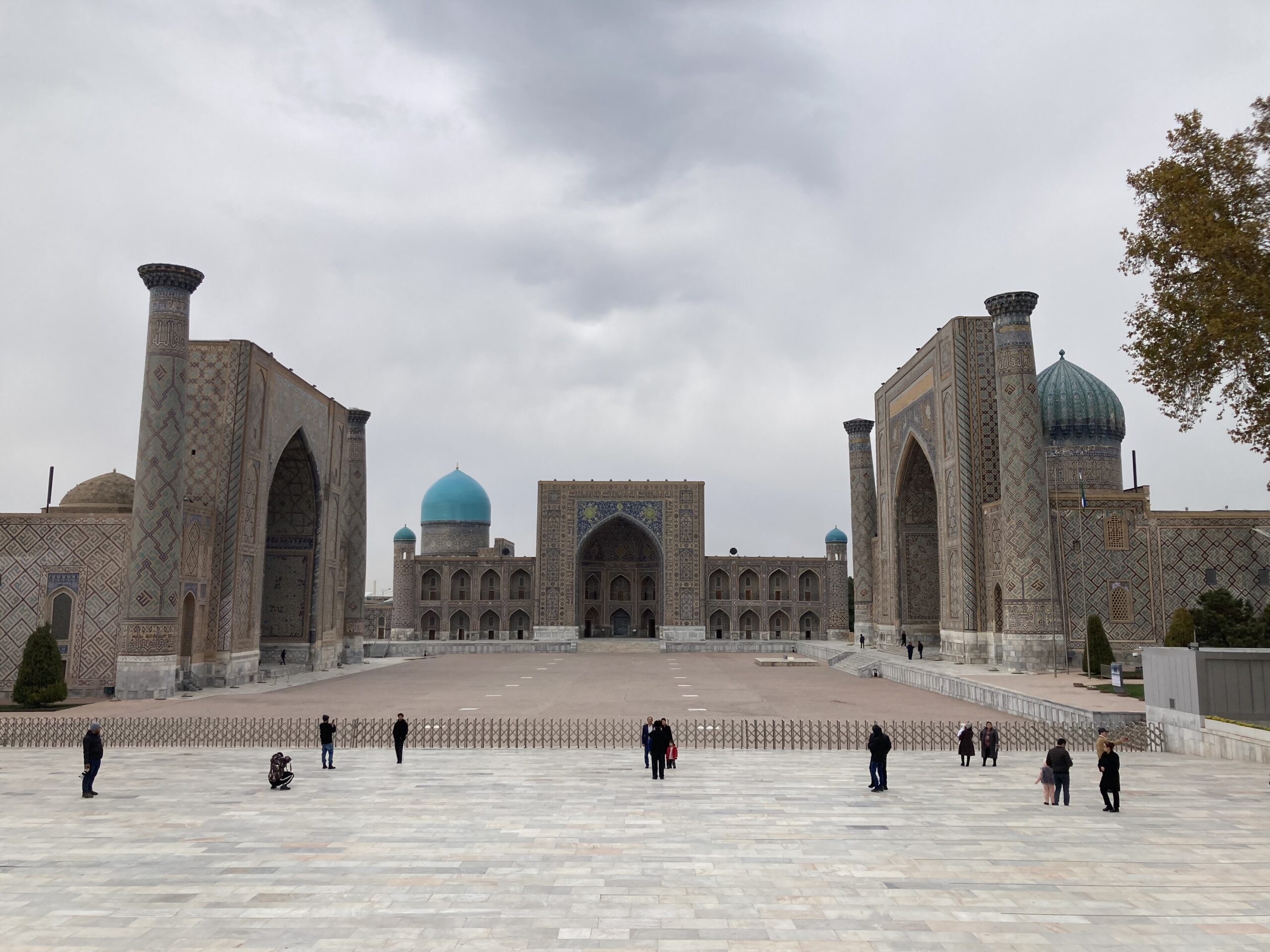
Perhaps the most popular sight in Samarkand, if not the whole country is Registan Square. This legendary town square with three beautiful madrasas is where I started my day, and it was the right decision. Despite it being December, this place soon started to swarm with tourists and locals alike, so it is best to go there early on.
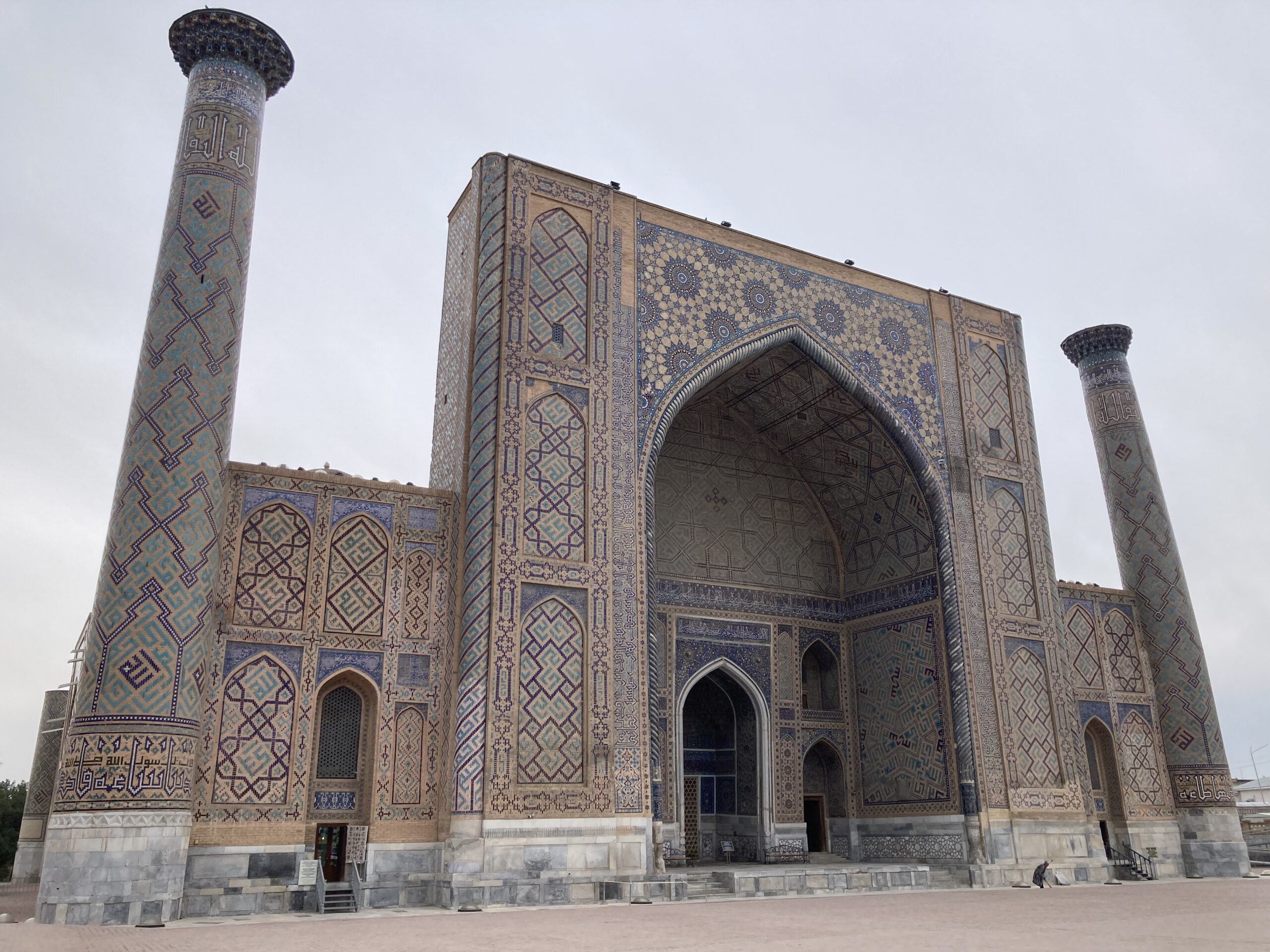
On the left you can find the Ulugh Beg Madrasah. There are some shops inside where you can buy souvenirs, but other than that it seemed to be the most boring one to me.
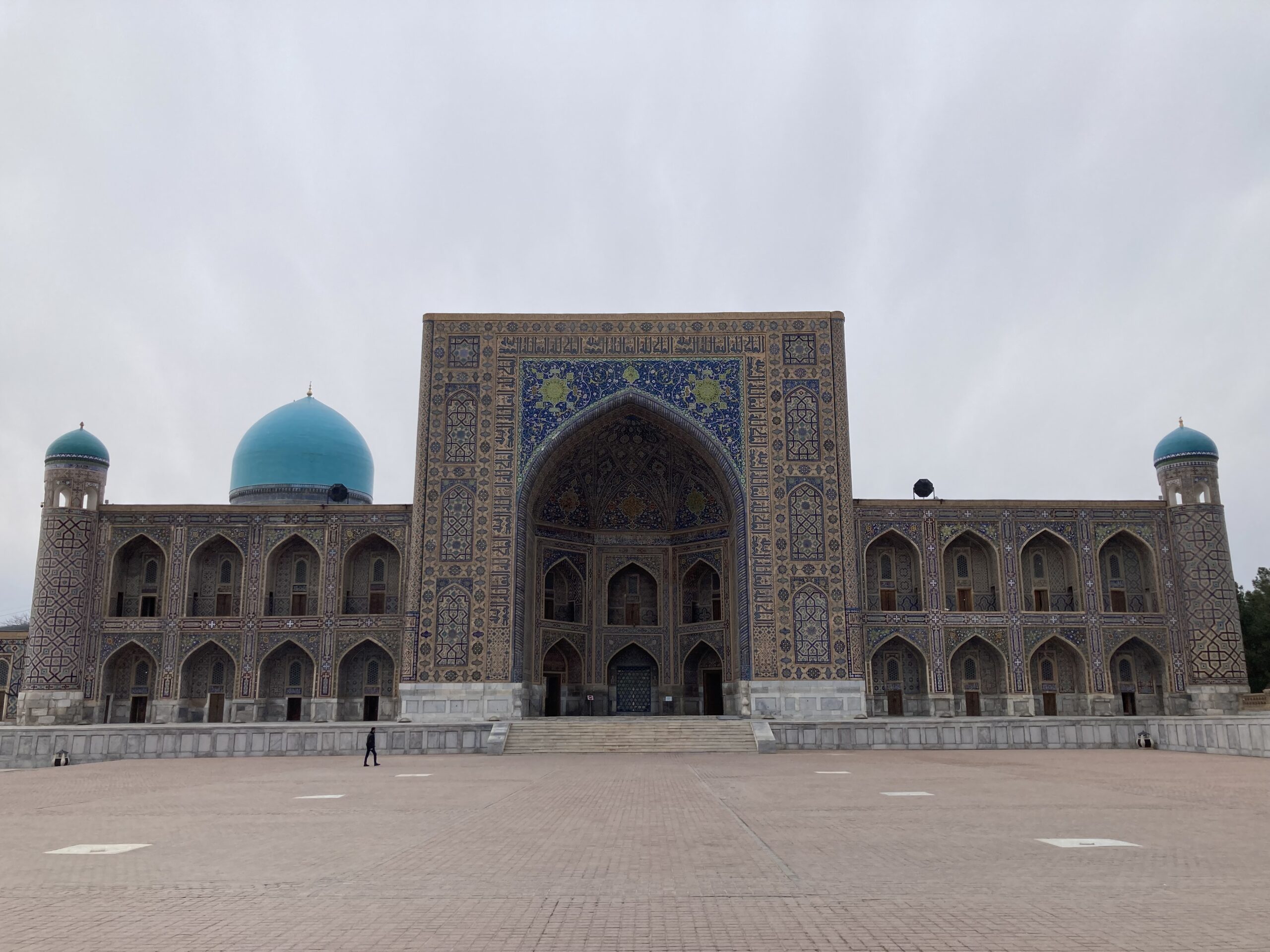
In the center, we have the Tilla-Kari Madrasah, which just objectively looks better, and actually houses a small museum as well as more gift shops and even some carpet vendors.
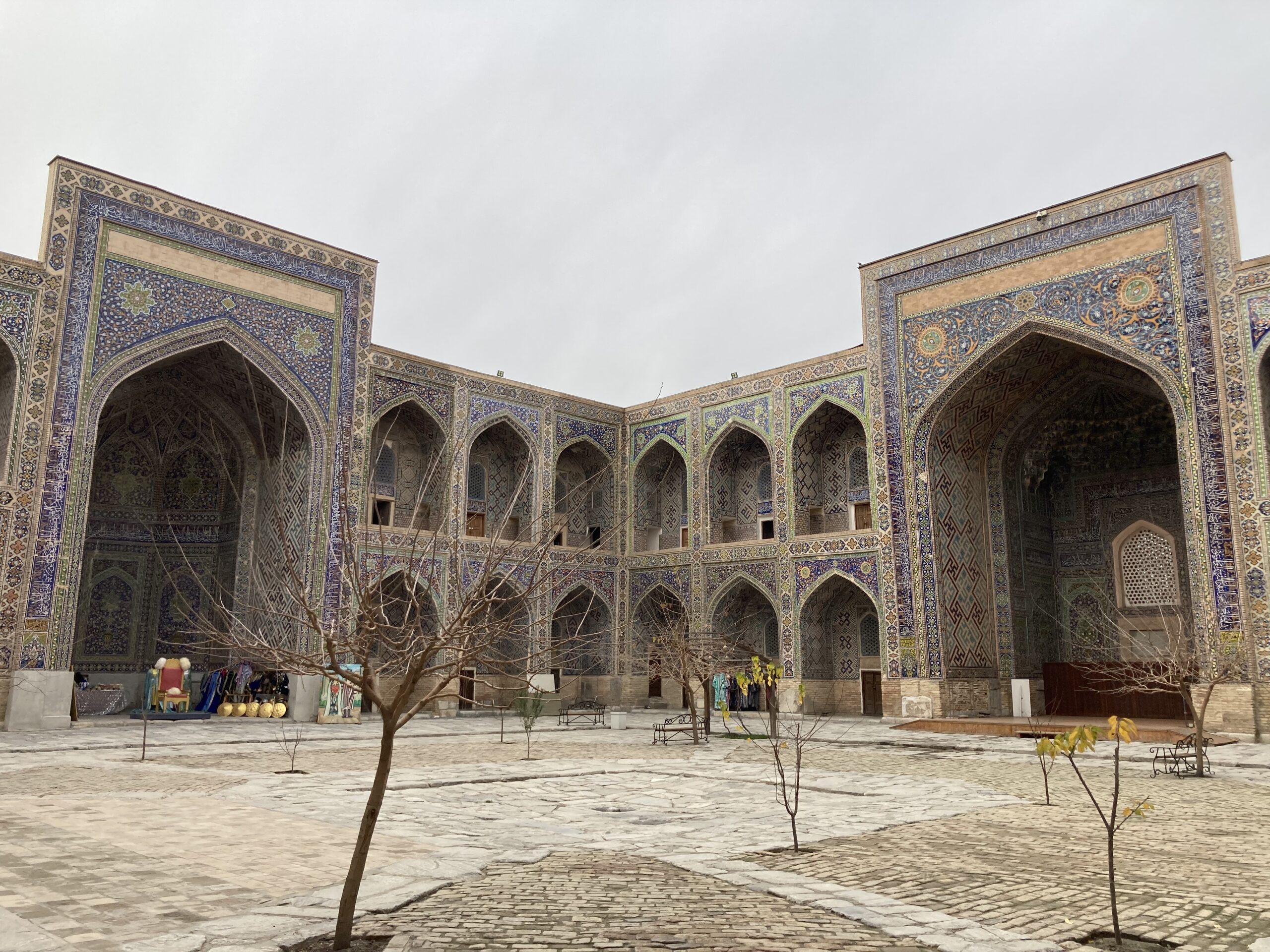
This is how its courtyard looks like, and those tiny doors lead to small shops ran by locals. Apparently, in summertime, there is more buzz here, with some stuff being sold outside.
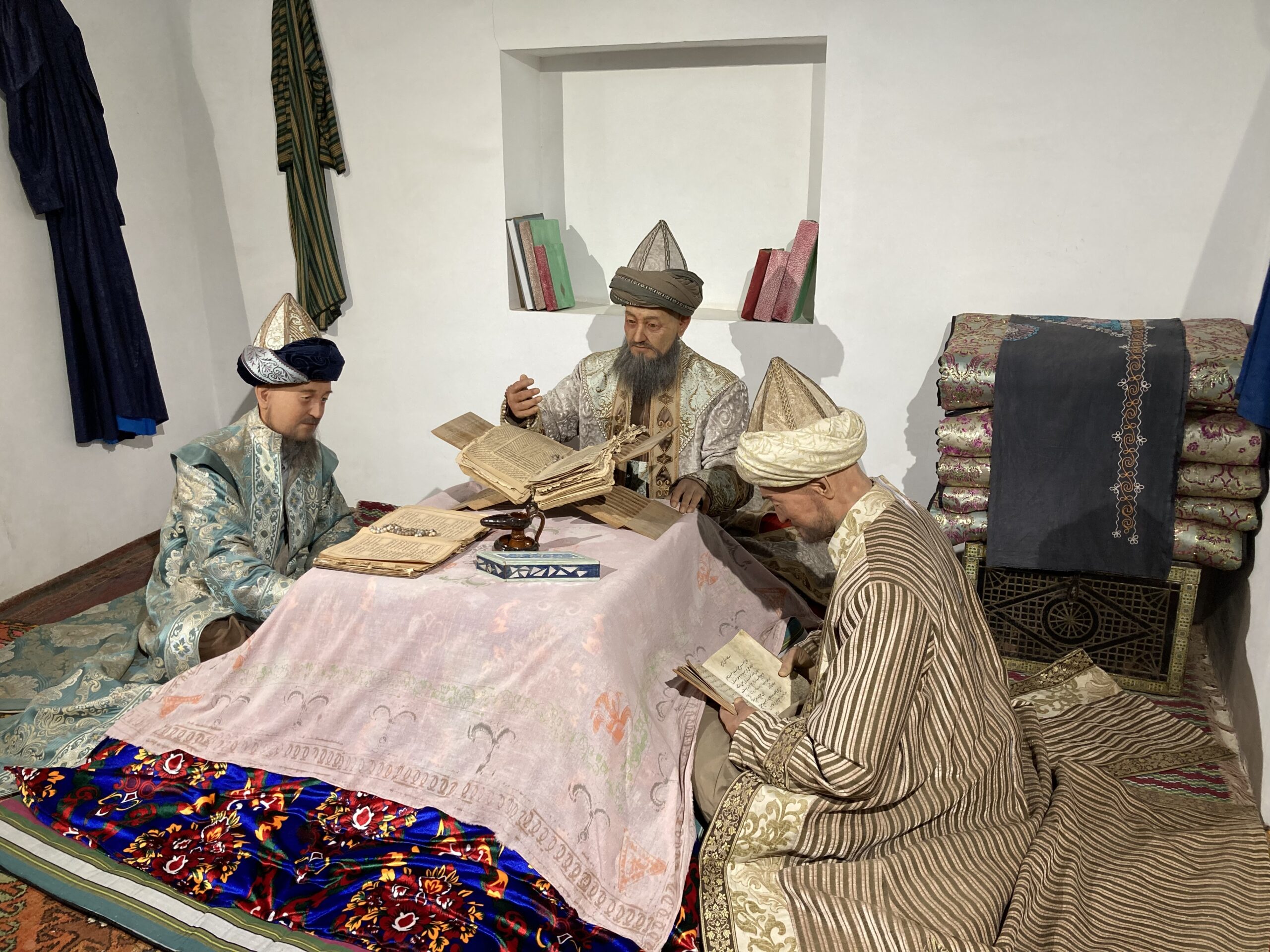
In the small museum inside, you can find out more about the kind of lives Islamic scholars led in madrasas like this one once upon a time. It is not a big place by any means, so the whole museum should not take more than five minutes of your time, ten tops.
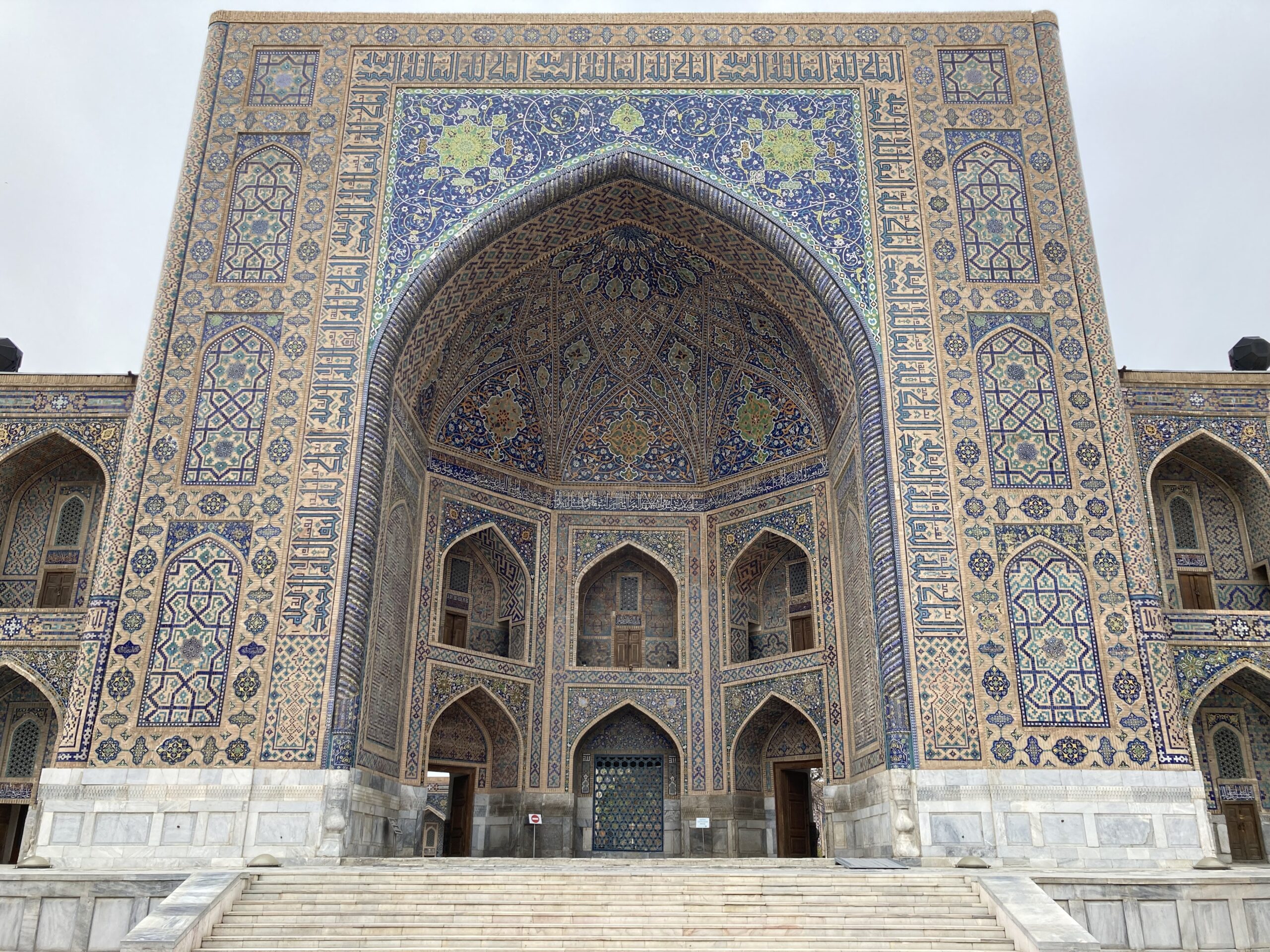
Just look at all those details by the way, I mean, it is amazing how ornate some of these entrances can be.
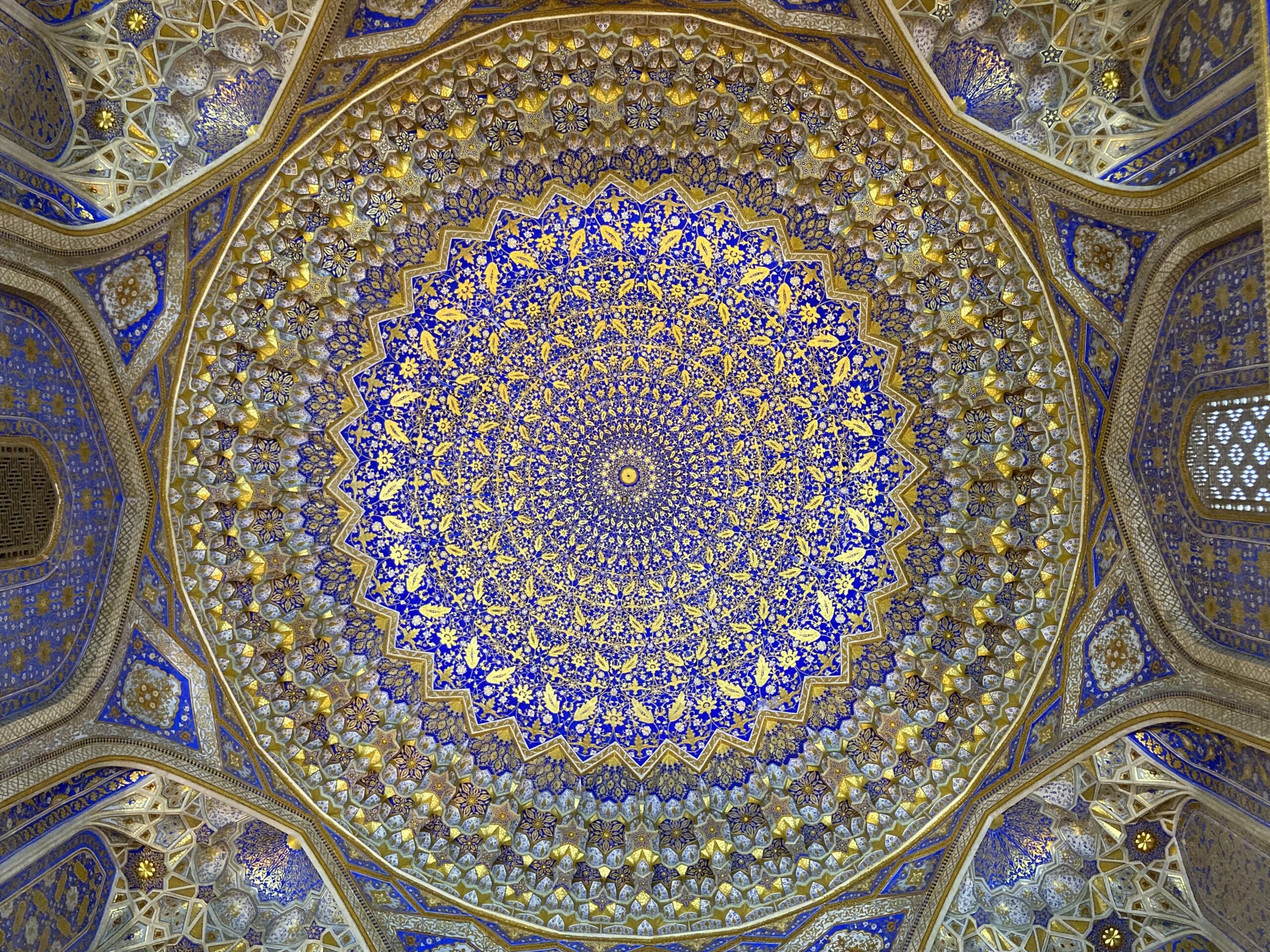
And of course, with how beautiful those are, one sometimes forgets to look up when you actually enter a madrasa, but that would be a huge mistake in Uzbekistan. Some of these domes look cool on the outside, but their true beauty comes from within apparently, as when you see how they look from the inside, you will forget all the previous artwork you have seen up until that point. I am just baffled, and that feeling hardly changed throughout my trip.
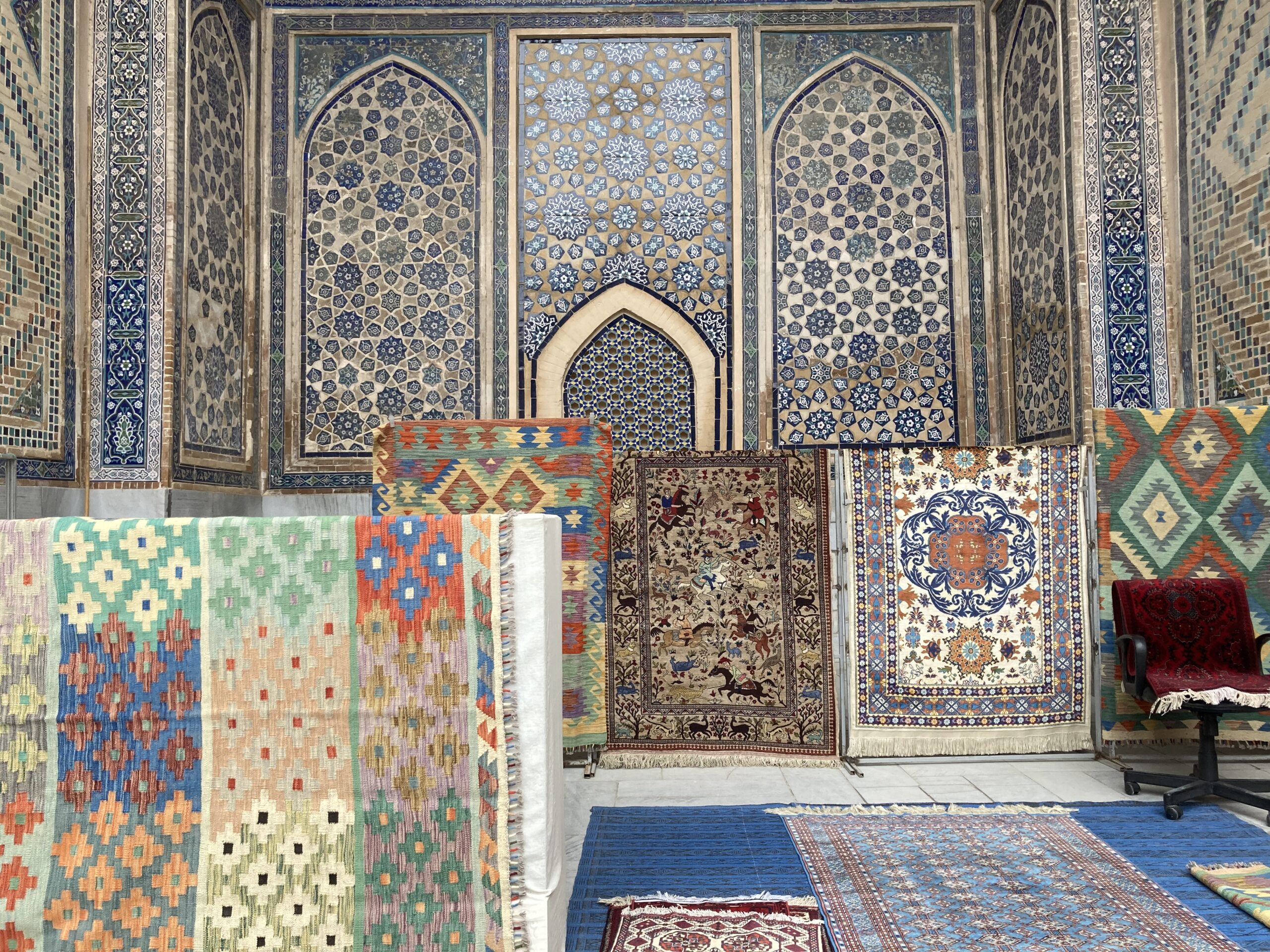
Well, let us go back to those carpet vendors! A short talk with one of them revealed that the lovely piece you see in the middle, the rather complex one with a lot of horses on it costs 2800 USD. After asking if it can be delivered to Turkey (not that I can afford it), the owner laughed and said, “I can get it to anywhere once I get that kind of payment!” I respect the hustle and hope to be back here someday to actually buy a carpet. Until then, here is a small taste of it for you all.
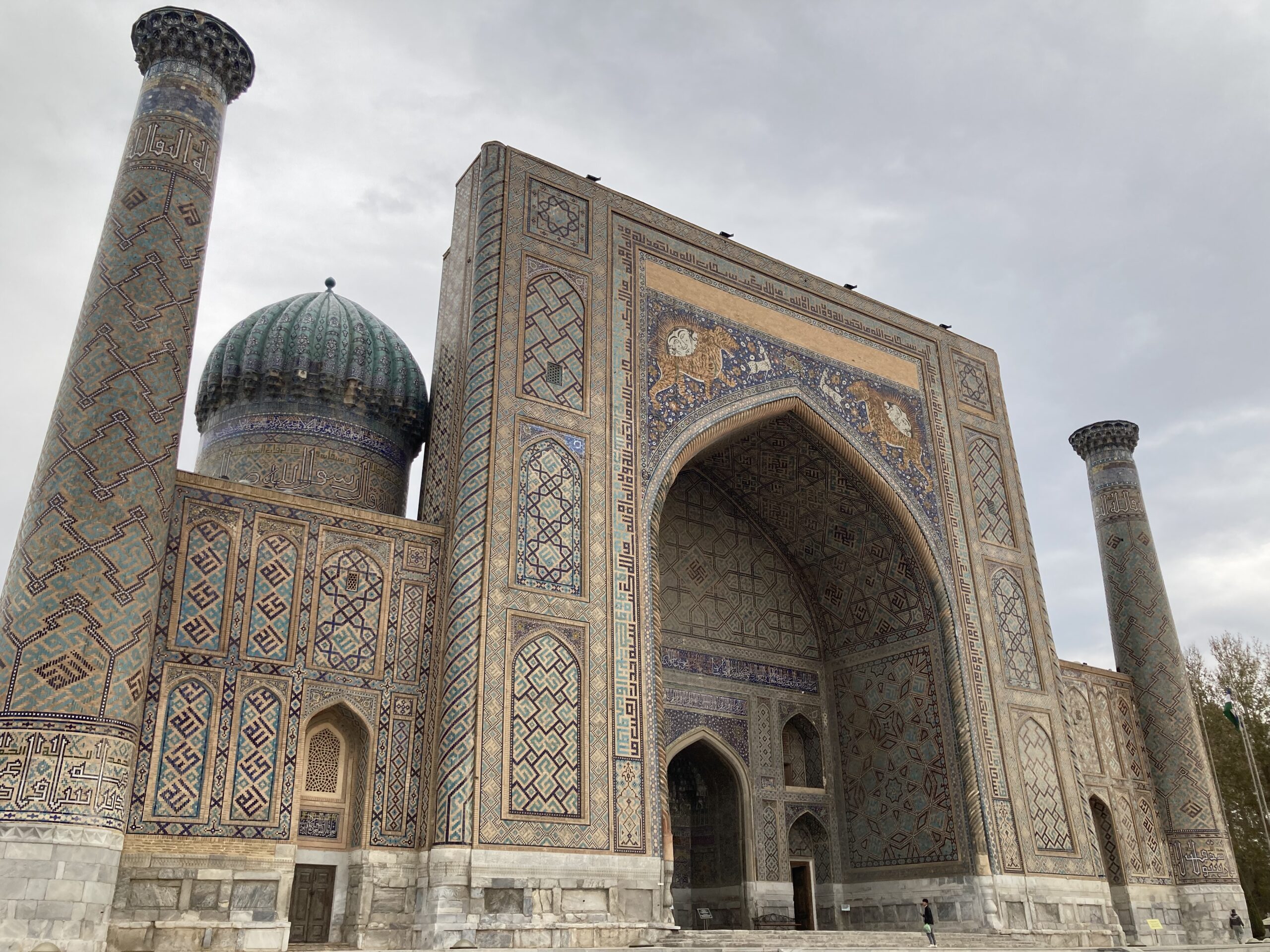
Let us go back to one of the prettier, if not the best madrasas here, the Sherdor Madrasa.
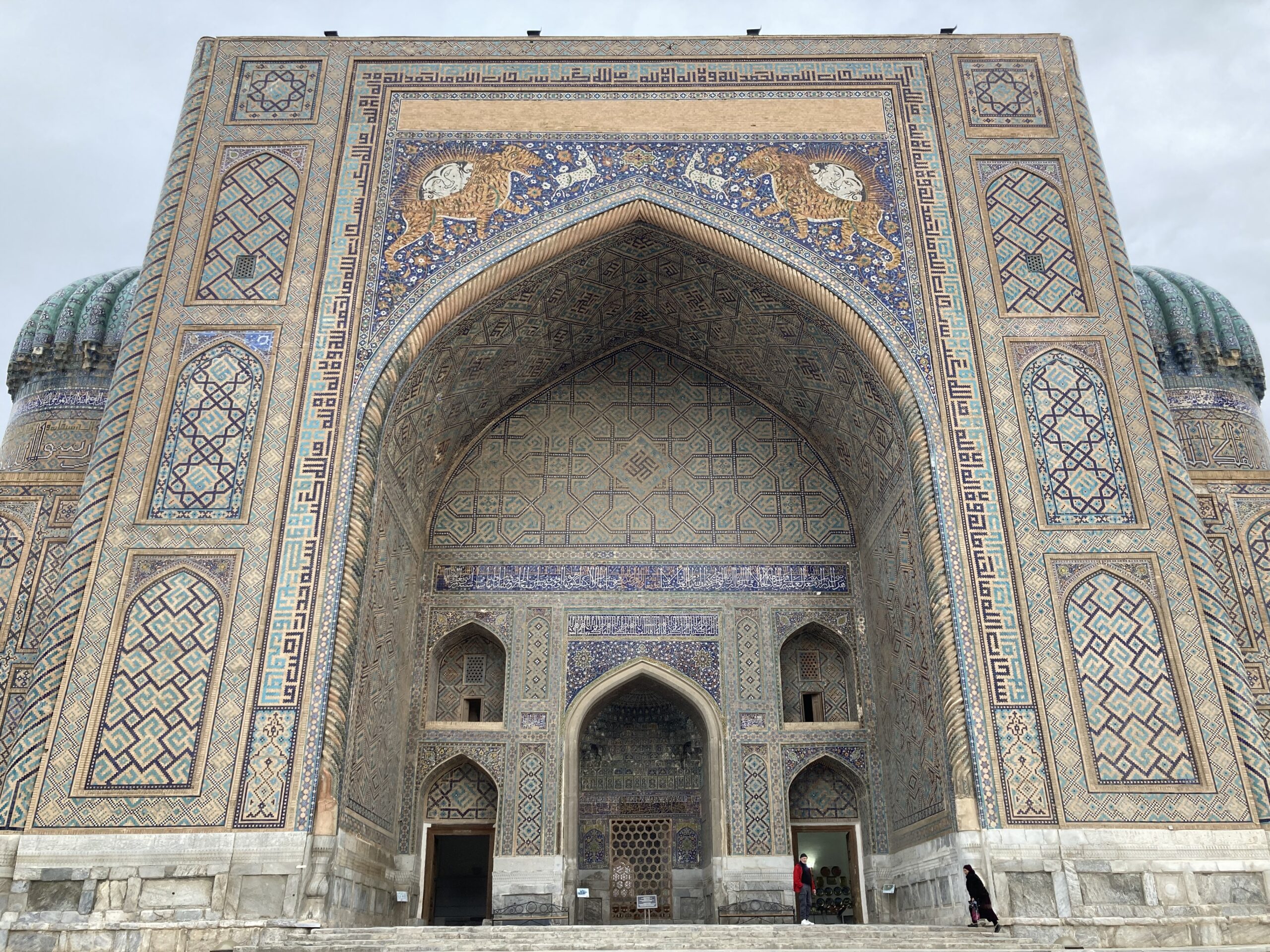
In my humble opinion, this one just looked the best. I mean, those two ‘creatures,’ for the lack of a better word, are just too iconic. Those tiger mosaics with a face riding on them can be seen all around the country, as well as on items in most gift shops you will find nearby.
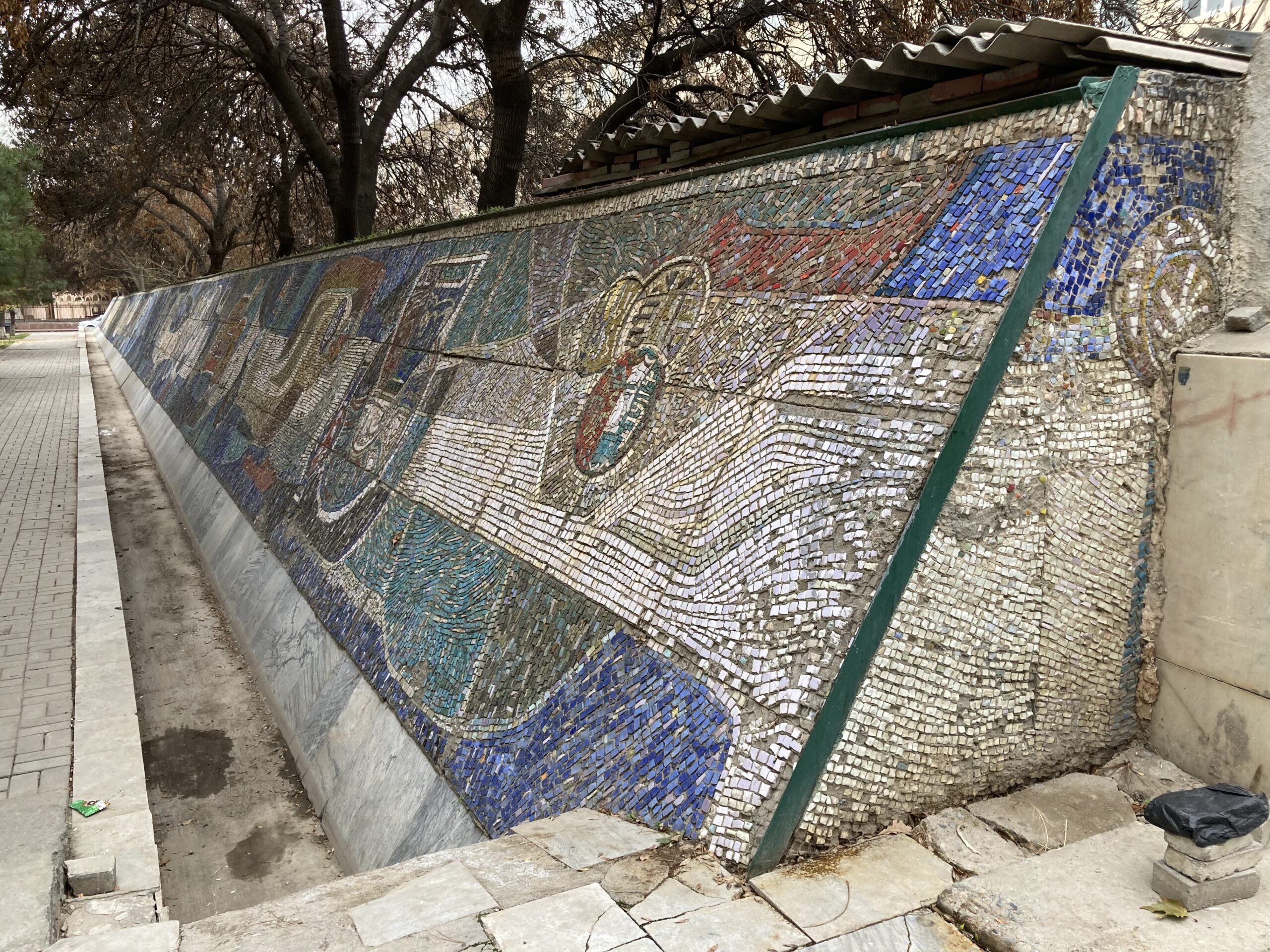
Satisfied with what I have seen so far, I slowly made my way out of Registan. On my route to the next destination, the mausoleum of Tamerlane, about which you should have already read about in a previous article of mine focusing on the cult of personalities in Uzbekistan, I chanced upon these Soviet mosaics. Now this was interesting. There was nothing Soviet in Bukhara, to my knowledge that is, and I wanted it to be that way for this trip, at least in these two destinations. It was certainly a call back to reality, and welcome in some ways, but it is things like this that keep you from truly being lost in the historical core of Samarkand.
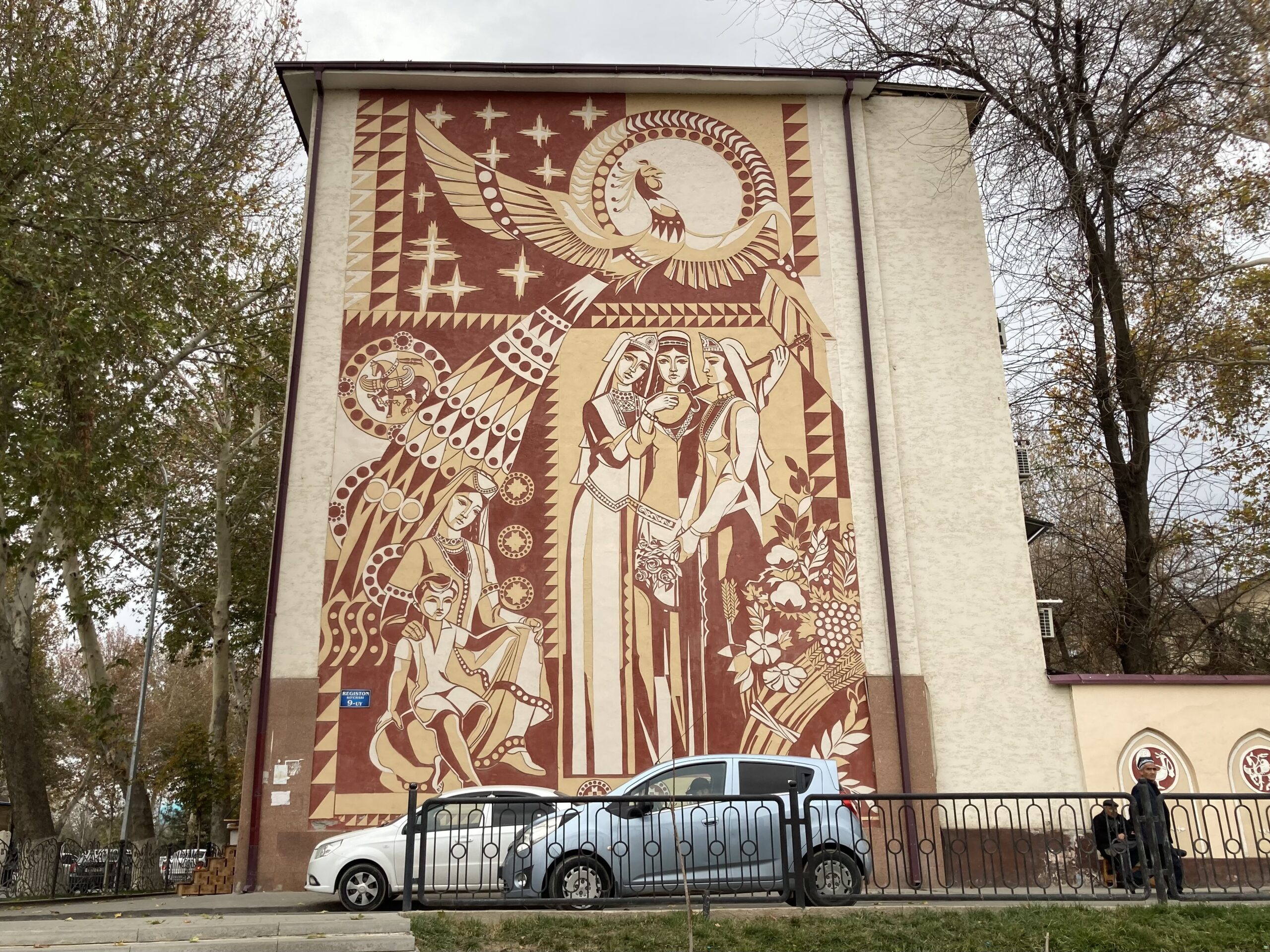
Just a few meters ahead of the previous mosaics, one can find this supposed Soviet art installation, though I have my doubts given how fresh it looks at times.
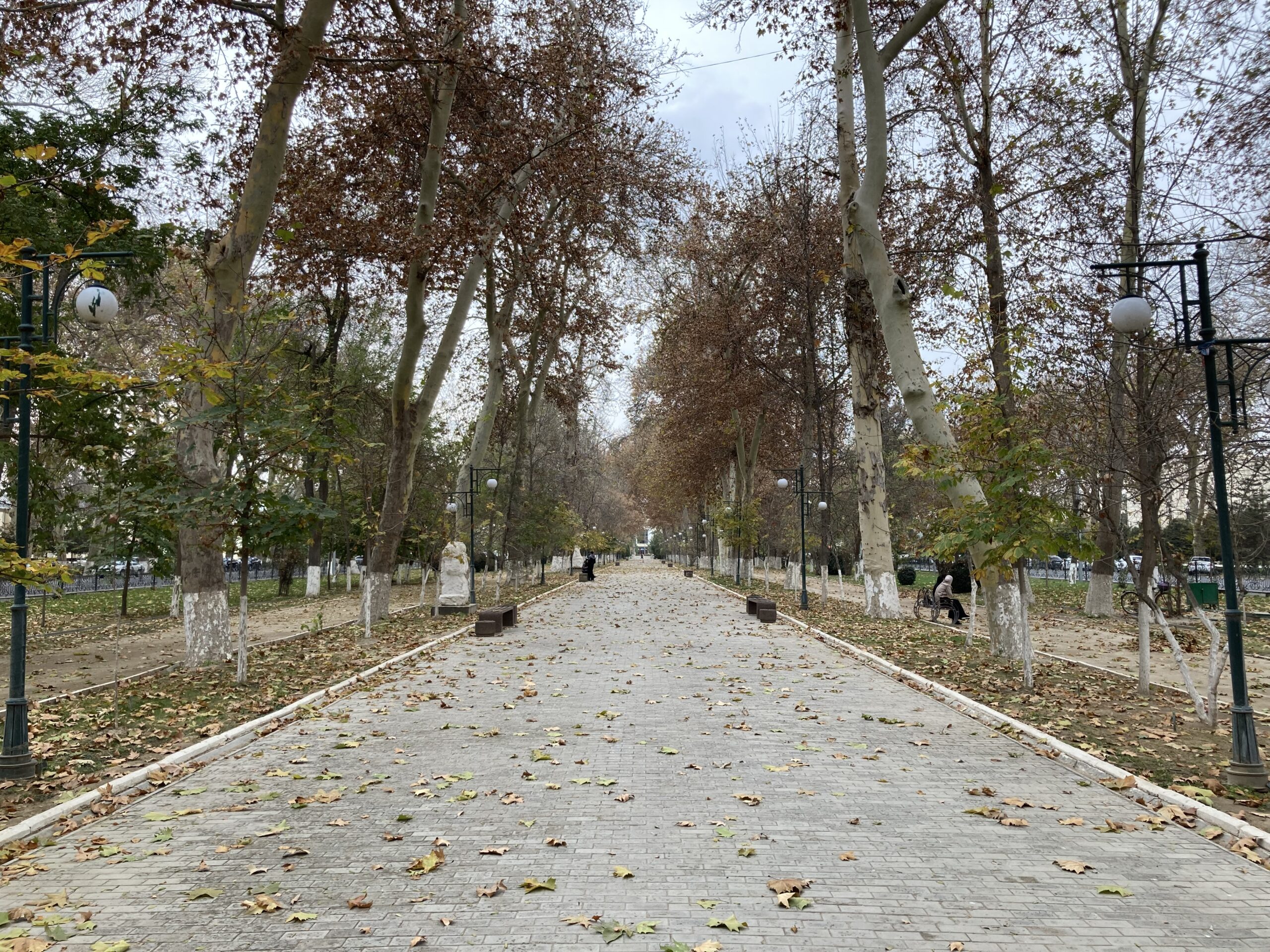
After my visit to the tomb of Tamerlane, I made my way to the nearby Old City Restaurant, where I tried some vegetarian Uzbek dishes, basically a meat-free version of plov and manty. On the way, I zigzagged around the University Boulevard, which is a pretty decent place to wind down, even when it is freezing cold outside.
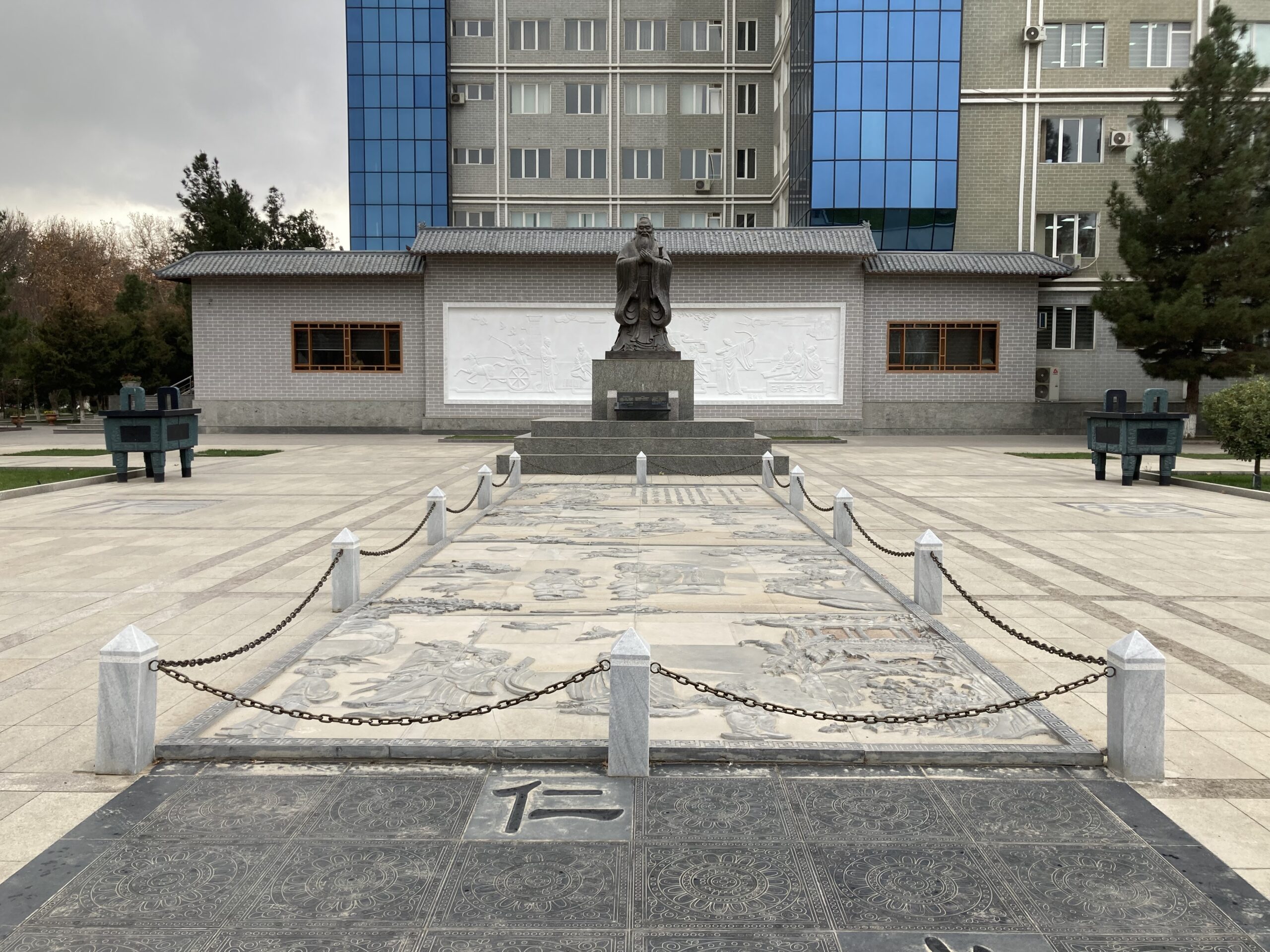
Uzbekistan, or I should say these lands in general, have ancient ties to Chinese domains of old, and new. It is an important step in Beijing’s Belt and Road initiative today, which is why one can see a ton of Chinese restaurants, small monuments dedicated to Uzbek-Chinese friendship, and some centres like this where one can study Mandarin and more.
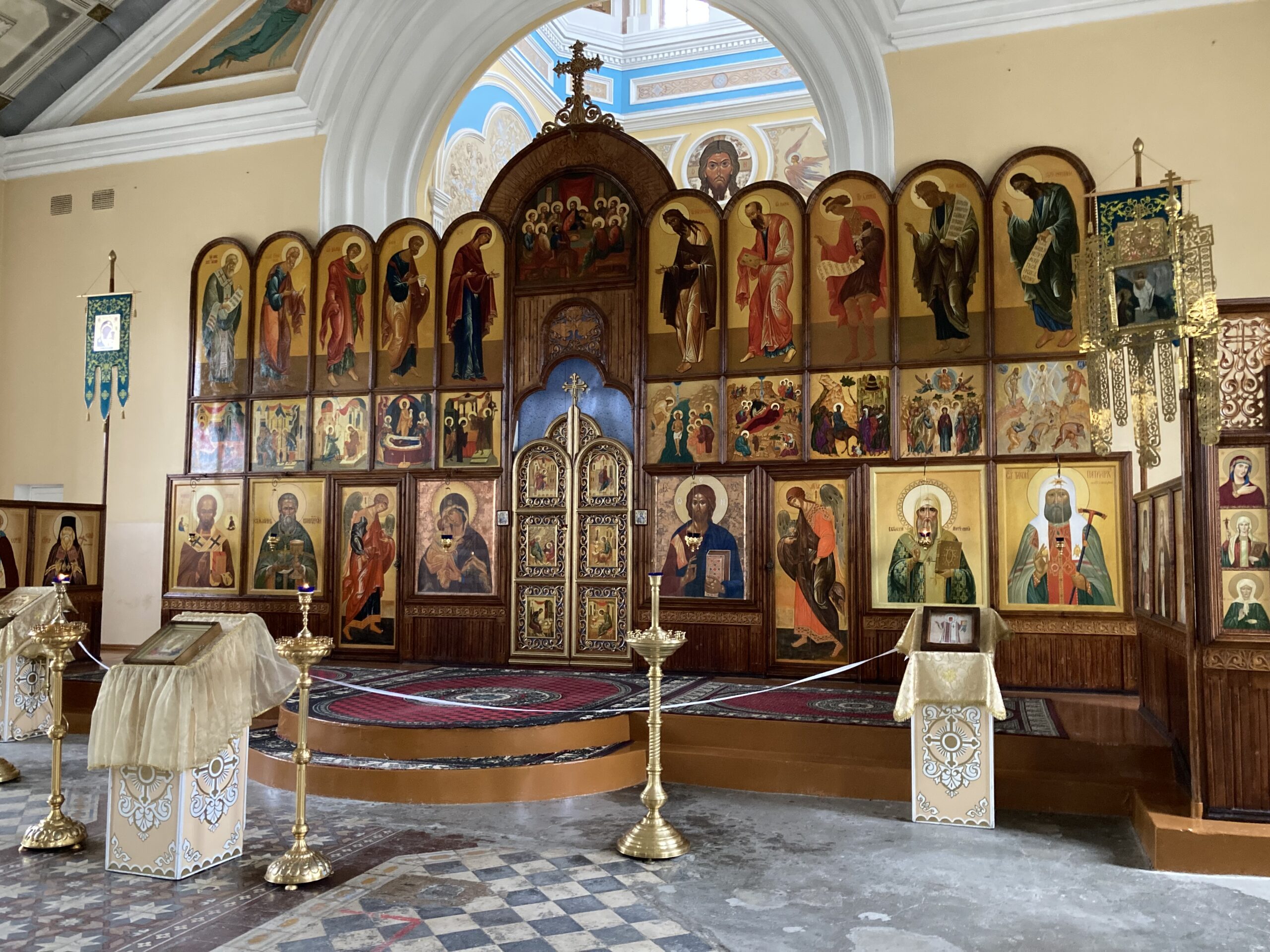
Quite close to the statue of Confucius, one can find the Church of St. Alexius Metropolitan of Moscow, which is one of the few Orthodox gems in the region. It was pretty small, but those that tended to it kept it squeaky clean, as all seemed to shine a bit more than usual. It was sadly completely empty, so after a short look, I went back on my way to have some lunch.
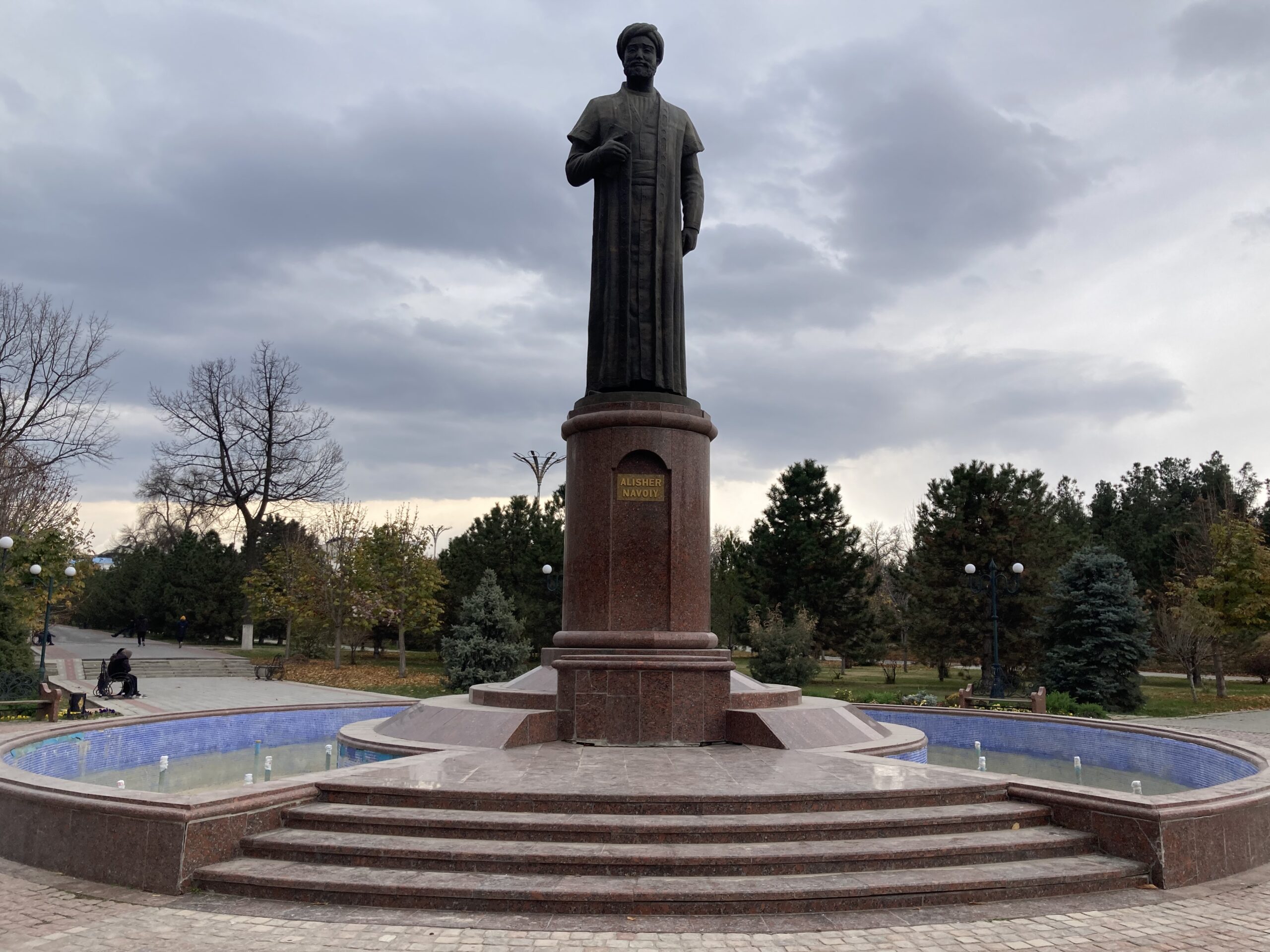
After a seemingly filling lunch that would actually prove to be not so filling in a few hours, I made my way to the nearby Central Park to take a look at the Alisher Navoi statue, one of the many that I have seen in this trip of mine. As what one can refer to only as the national historical poet of Uzbekistan, he is a pretty popular subject to depict all around.
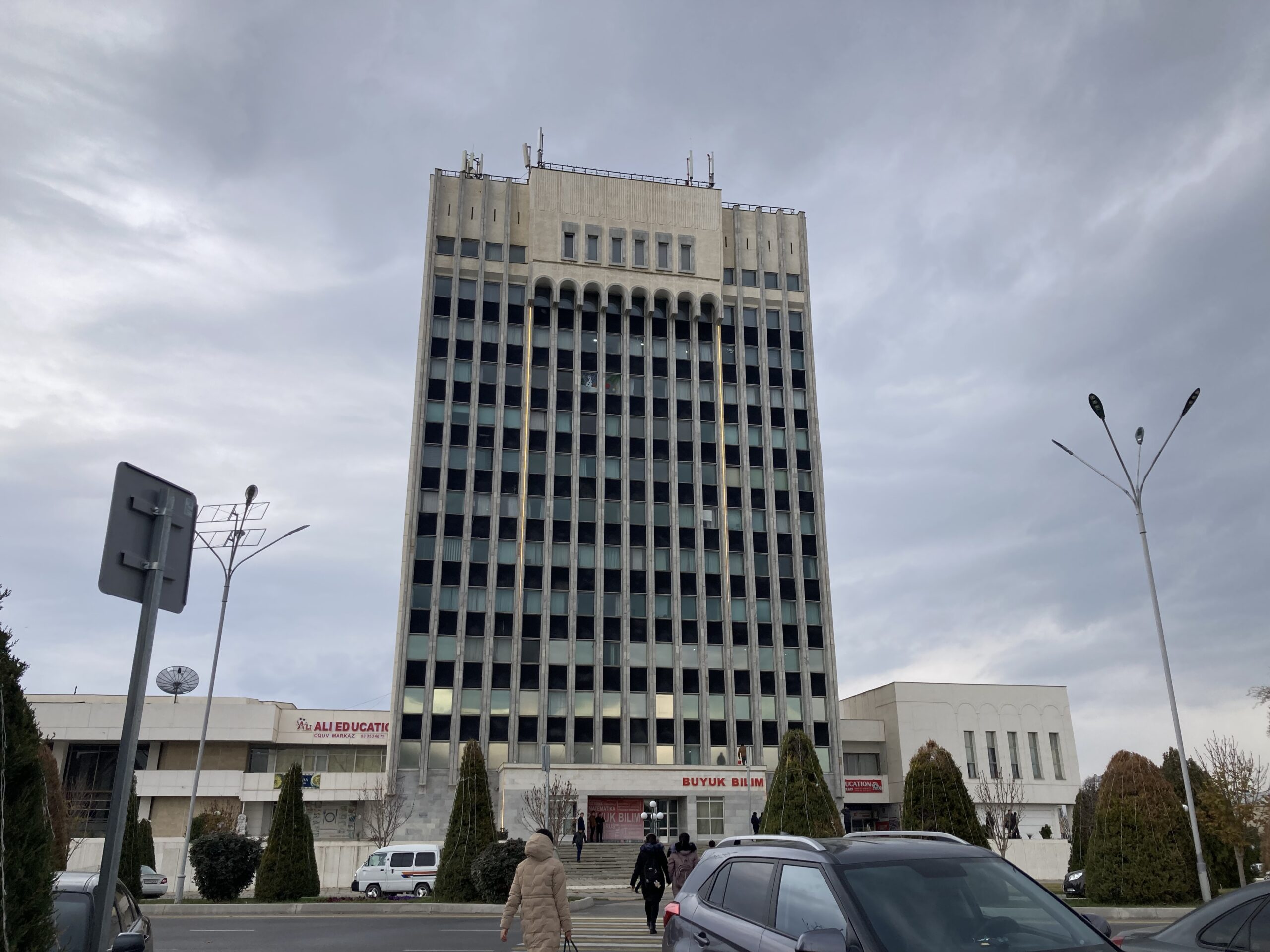
Determined to see what the massive flagpole looked like from up close, I slowly made my way to where it was planted, and I was extremely surprised to see a few almost desolate looking buildings around it, this one being the one that captivated me the most. So close to the city center, and seemingly a research institute of some sort, and yet it was lacking windows, and seemed devoid of life other than its first floor.
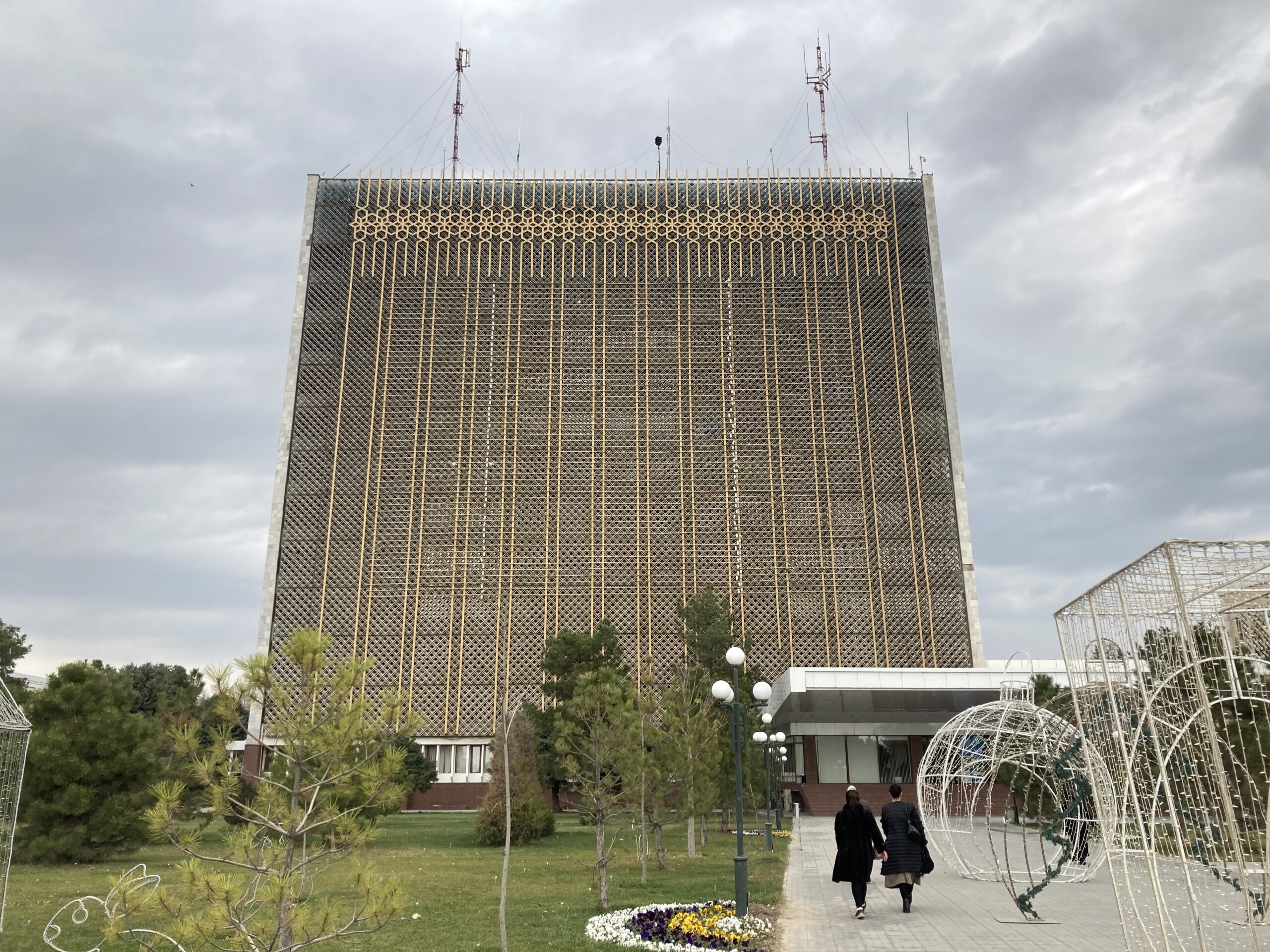
On the other side of the road, one could see this behemoth of a building, which apparently is used by the local government. Once again, the Soviet Union pokes its nose into my trip, to make itself ever so visible.
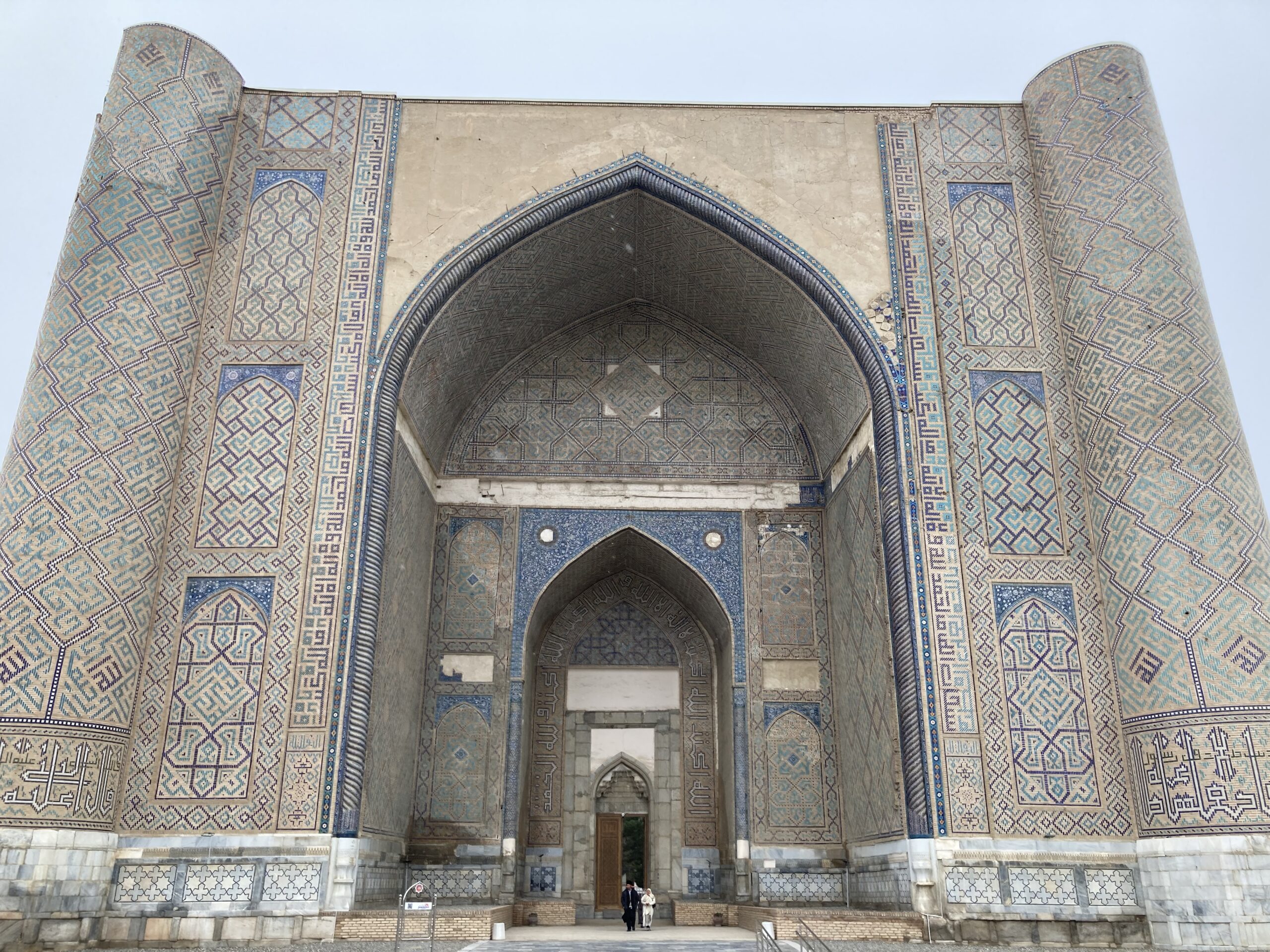
Satisfied yet tired, I eventually returned to my hotel before leaving it the next day to continue my adventures around Samarkand. This time I started with a visit to Bibi-Khanym Mosque, which was alright at best.
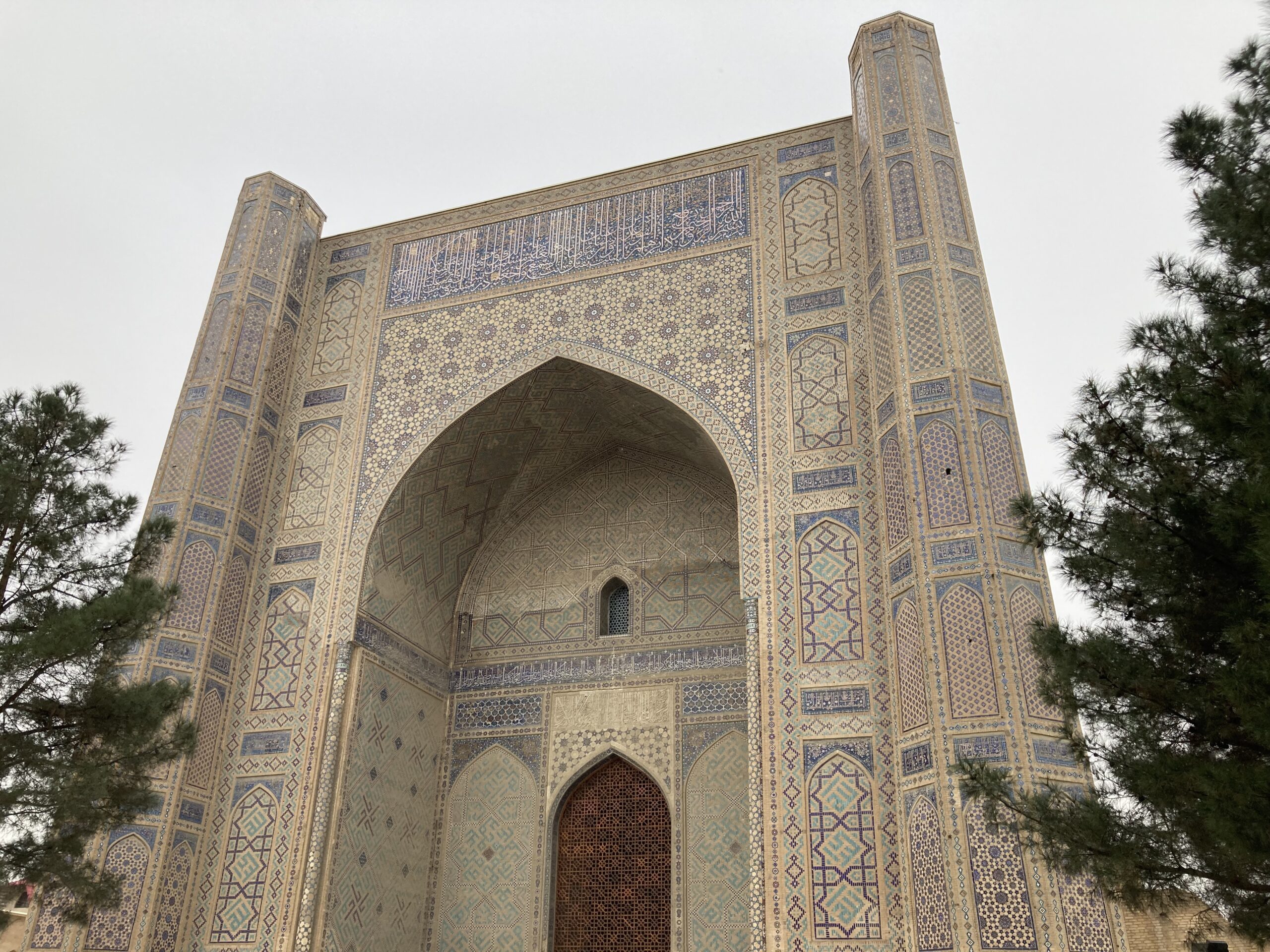
You actually pay a decent amount to enter here, though the details escape me now. But even then, there is nothing to see inside other than all these buildings, which you can somewhat do from outside the perimeters as well…
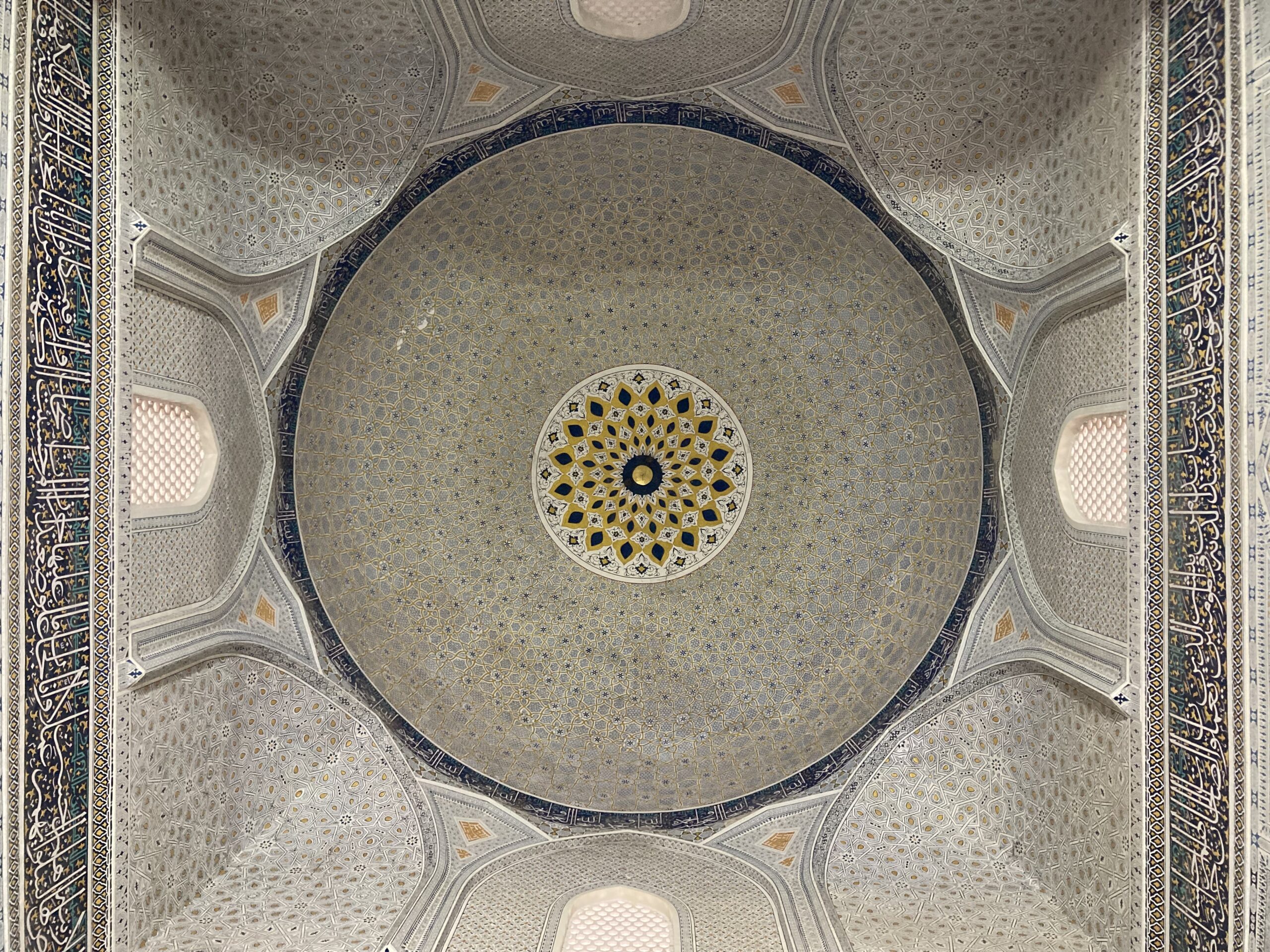
At least one of the wings of the mosque had this beautiful dome, which was a joy to look at.
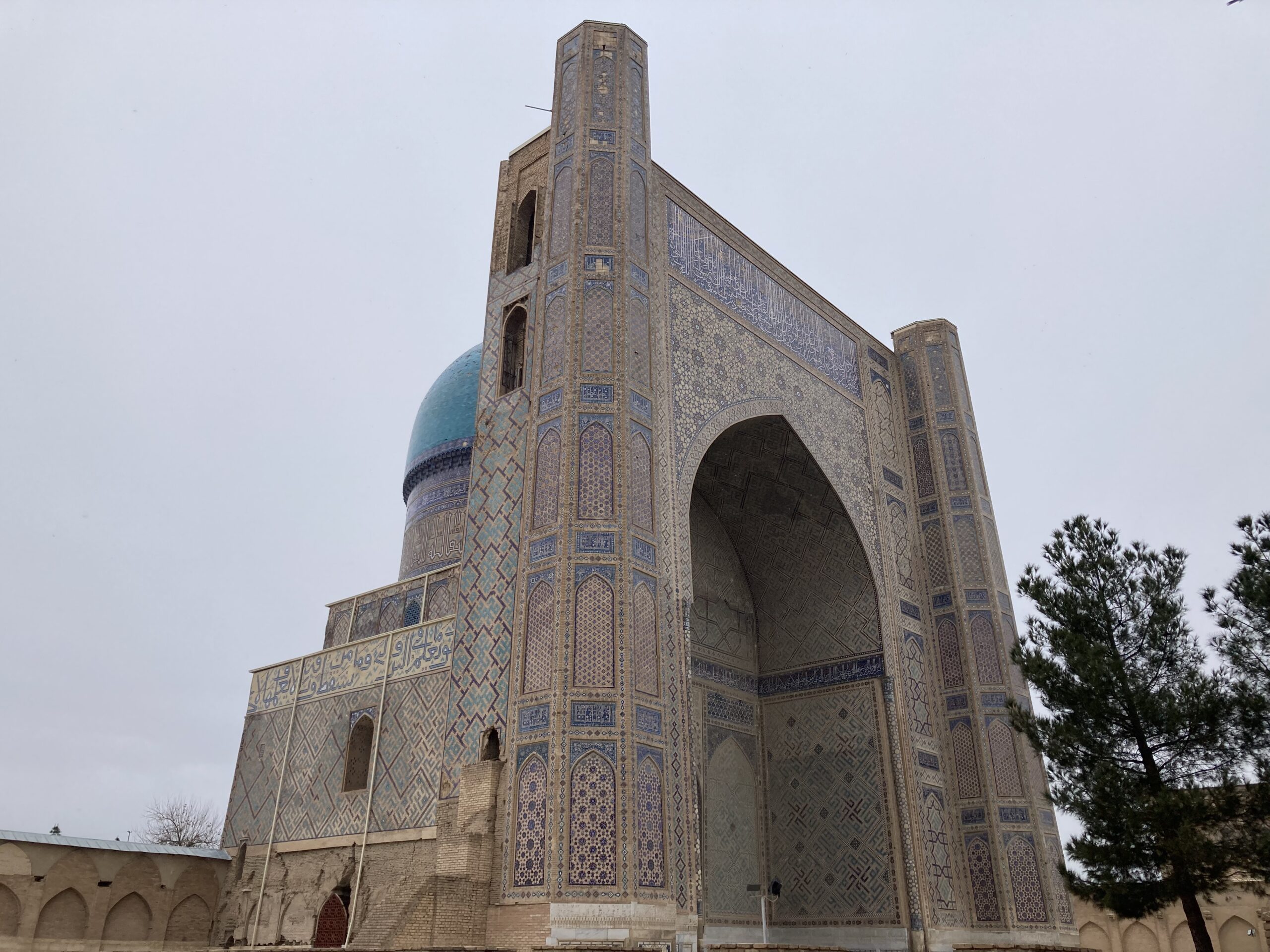
The real mosque itself, or perhaps its main part seems to be this one, which is, I admit, pretty, but once again, you cannot even go inside it… I guess it was under renovation at the time, so perhaps I just got unlucky.
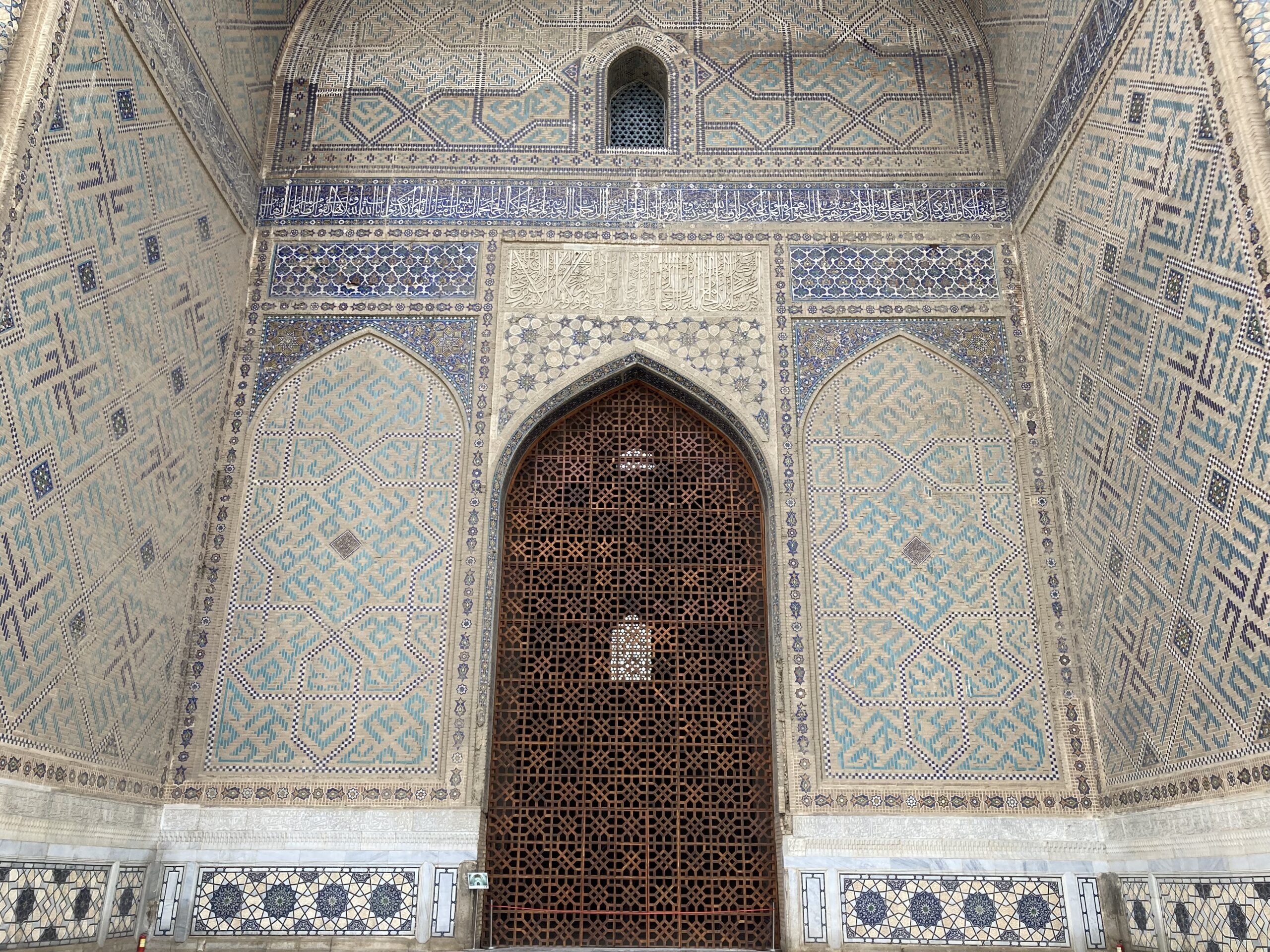
Here you can see a closer up look to its entrance. The details, as always, just make me smile uncontrollably. I guess it can indeed use some renovations but still, even as is, it is pretty.
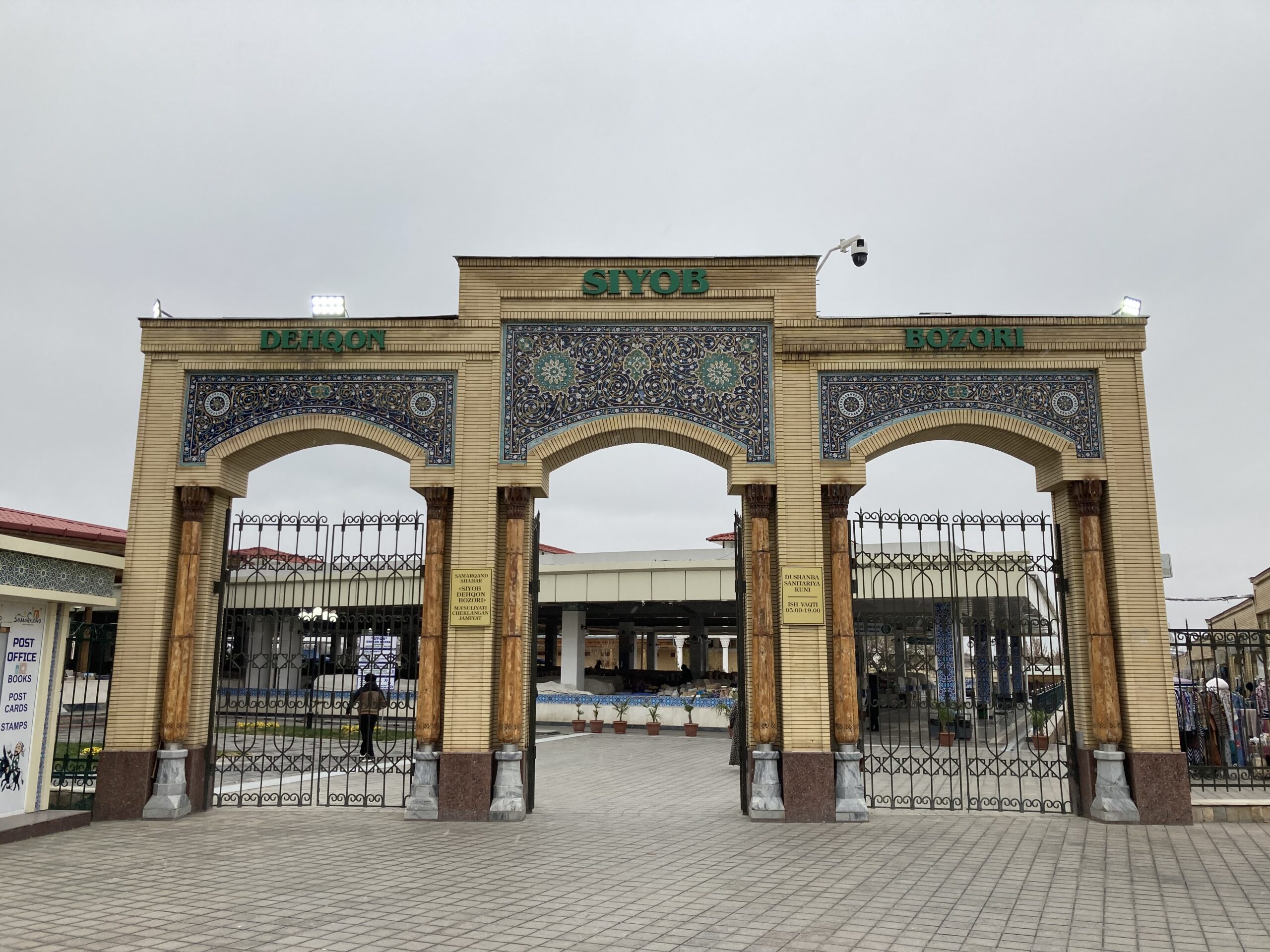
Next to the mosque one can find the locally famous Siyob Bazaar, which looked like the best place in town to buy some nuts, desserts, vegetables, fruits, and souvenirs. As I was there with two small back bags, both of which about to burst with my dirty clothes, I simply lacked the space to do any shopping but it is well worth a visit to see its hustle and bustle.
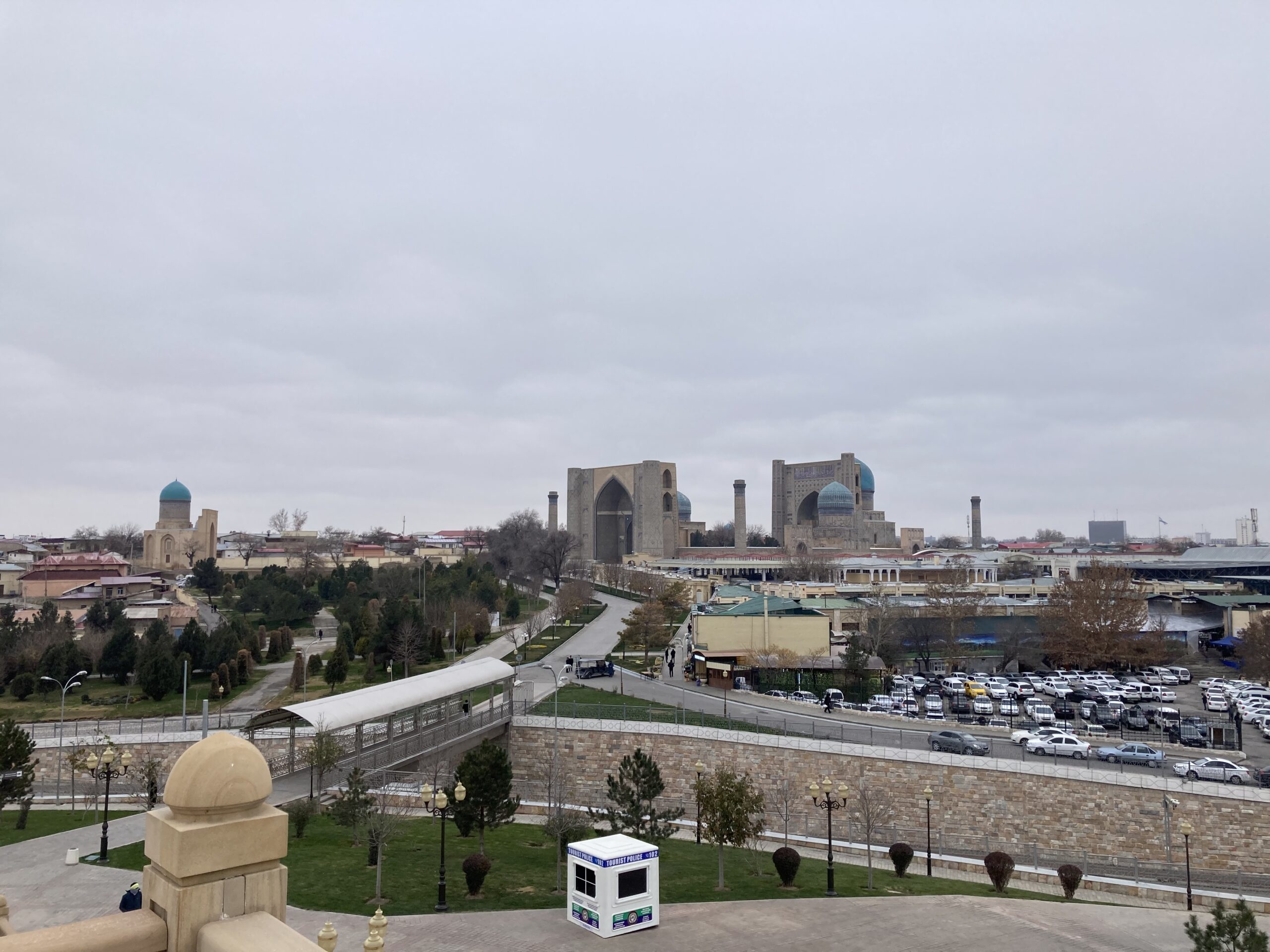
You can eventually make your way to a small hill on the other side of the mosque and the bazaar, from where you can take a look back at the city center.
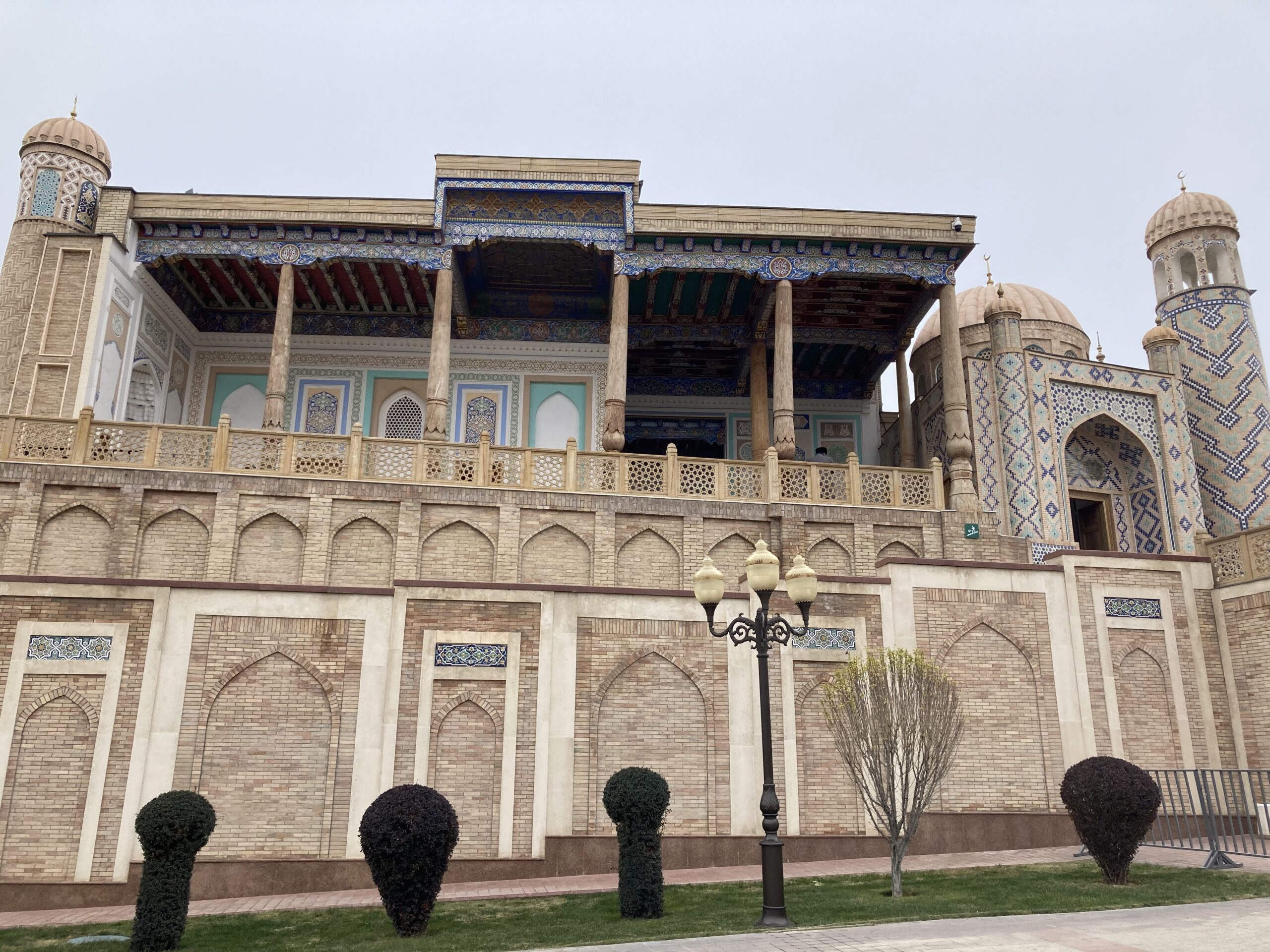
Once you get your fix of that, try and look just behind you to revel in the glory of this elaborate 19th century mosque, that was supposedly built on the site of the oldest mosque in Central Asia. The Hazrat Khizr Mosque is a must visit when you are in town, and it is surprising to see that one can see its unique architecture and wonderful wooden frames free of charge.
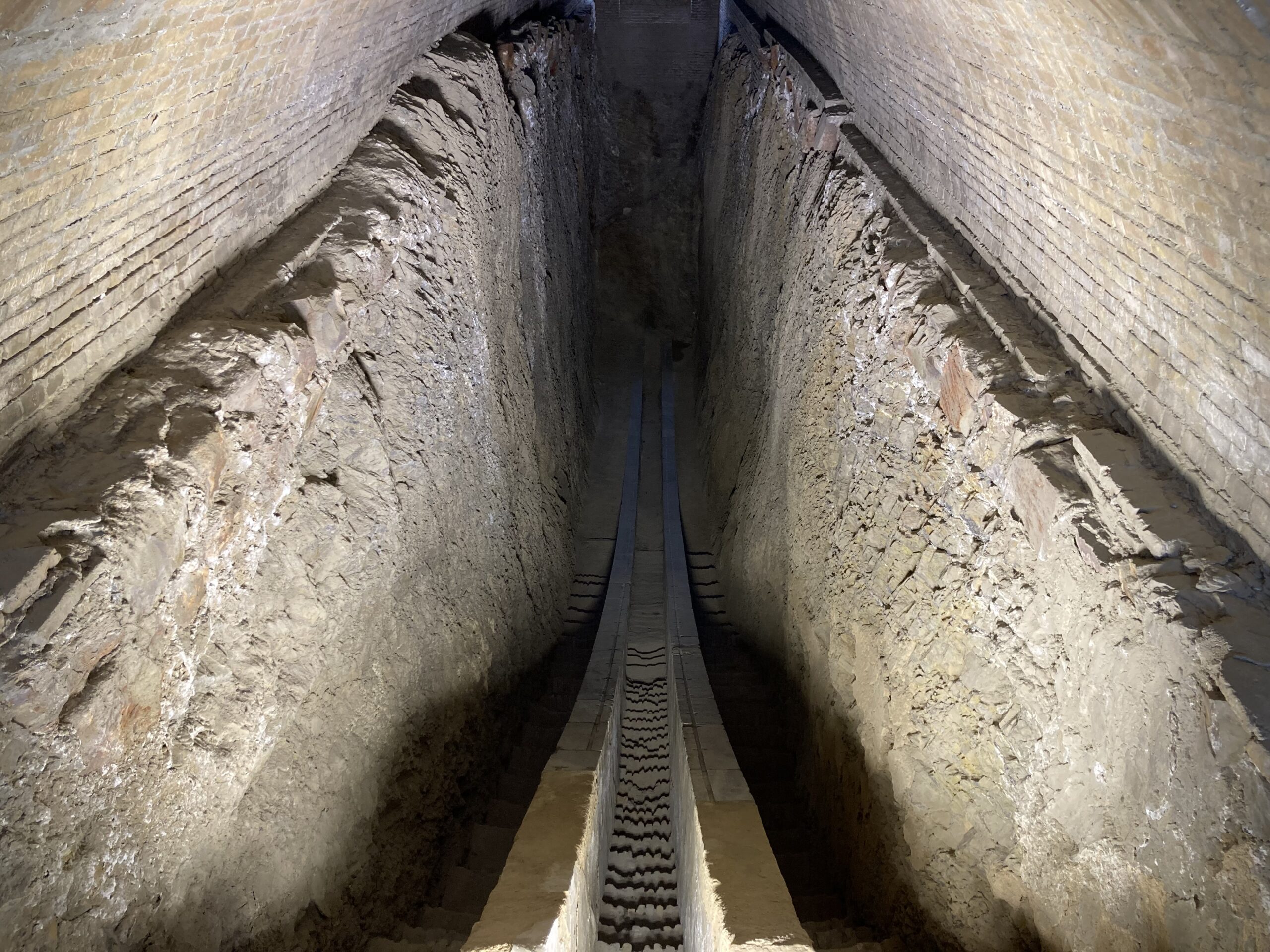
There are some cemeteries and an excellent mausoleum complex known as Shah-i-Zinda right around the corner from that mosque, but you can read all about those and more in a dedicated previous piece of mine which explored the domain of the dead in Uzbekistan, and by that I mean its exceptional cemeteries. Let us continue our tour with a visit to the Observatory of Ulugbek instead. This 15th century astronomer was not only a Timurid sultan but also a scholar. Unfortunately, his scholarly pursuits made him less aware of the political turmoil in his own empire, which eventually costed him his throne, and got him assassinated by the order of his son. Speak of dedication I guess…
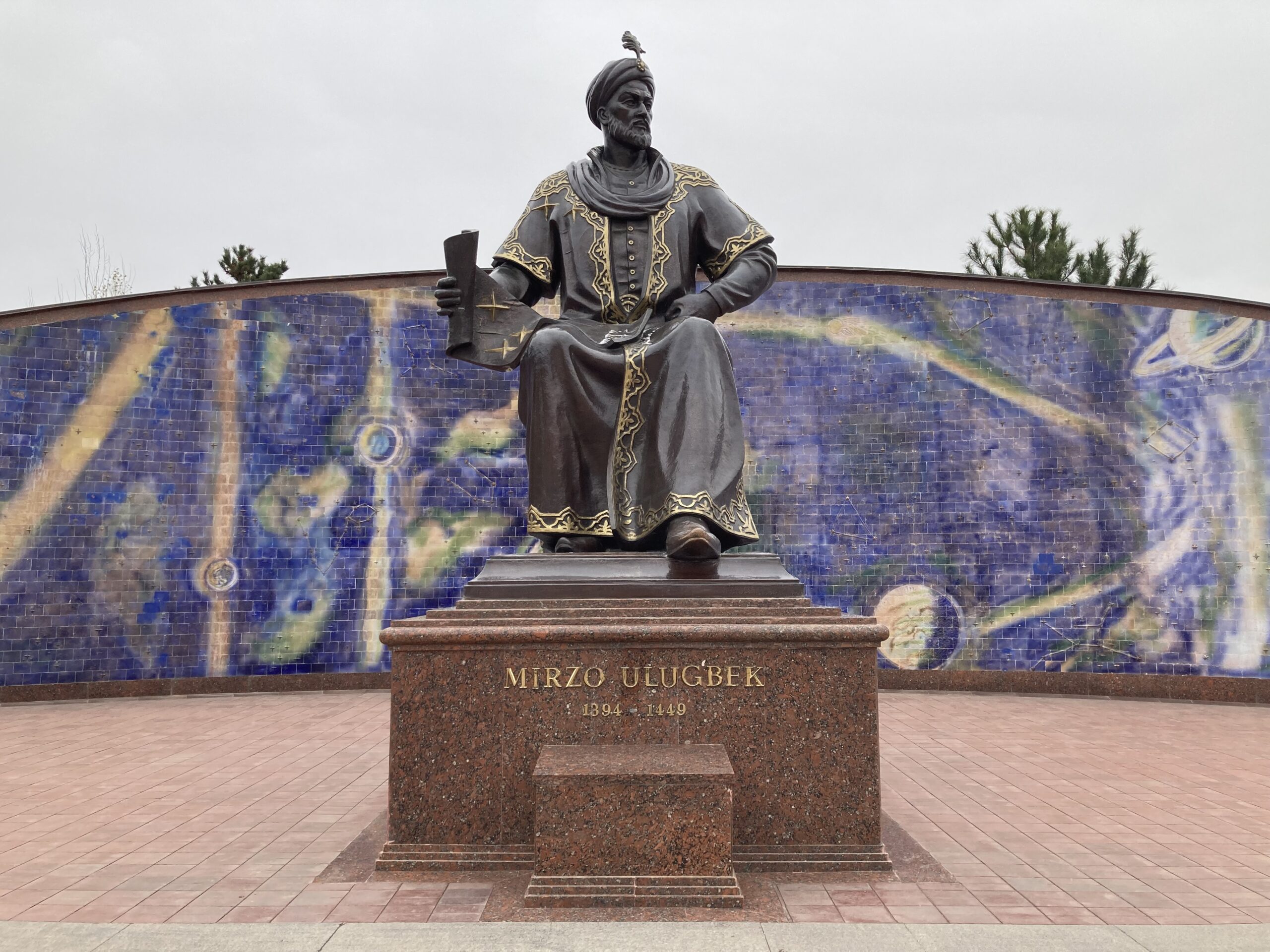
In the entrance to a small museum dedicated to his works, as well as his actual observatory, you can find this statue of his. Incidentally, there were some couples here who came to get their wedding photoshoots. I have seen people doing that in front of the letter statue in Nizhny Novgorod, so I suppose I cannot judge their decision, but still, really?
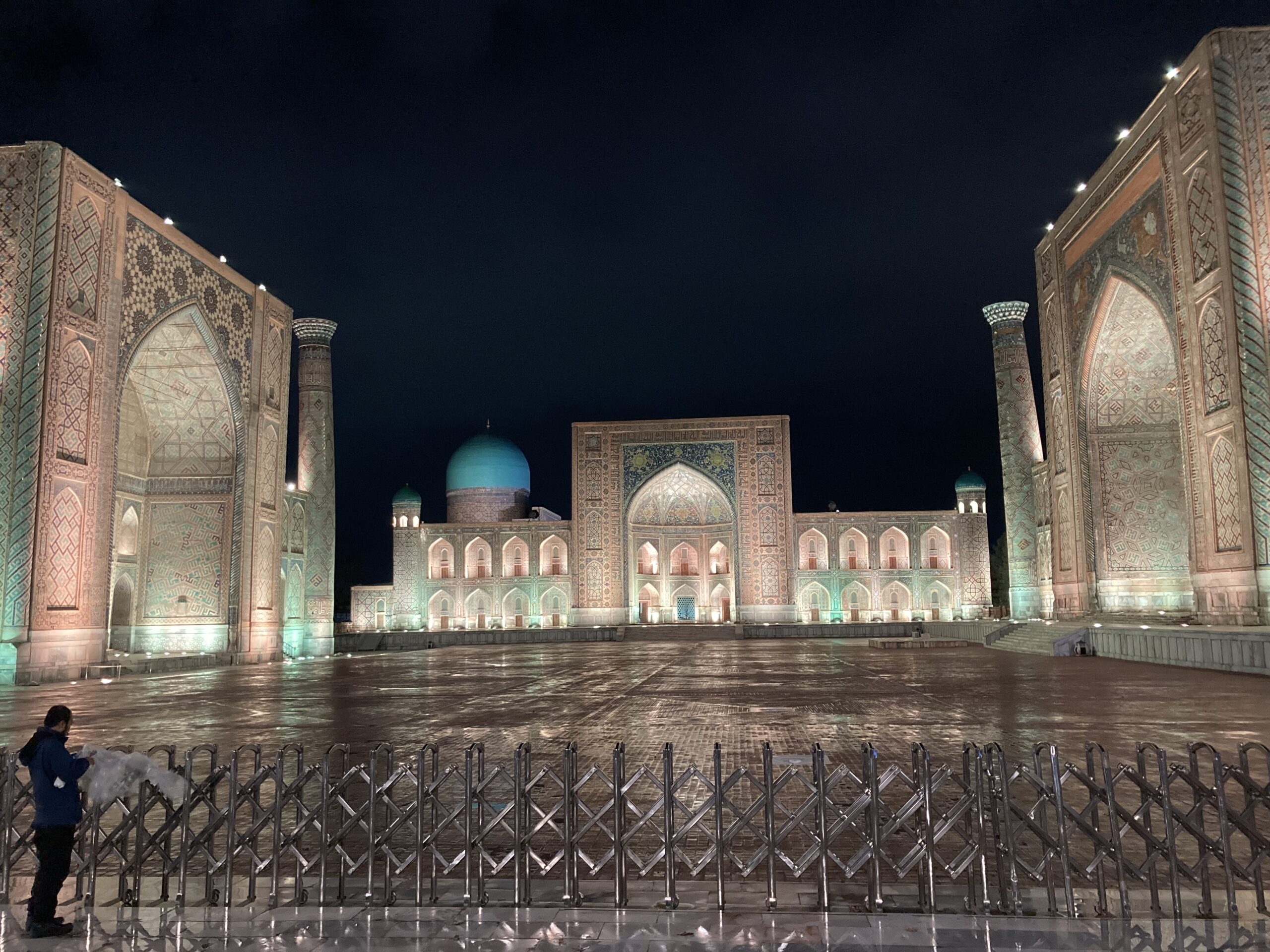
Though this exploration of Samarkand did omit the mausoleum of Tamerlane and Shah-i-Zinda as they are already a part of my previous articles on Uzbekistan on this website (and I really hate doubling down on my own writing), it should give you an idea or two about the kind of destination Samarkand is. Is it a must see destination? I would say yes. Is it a dreamy and almost unreal place like Bukhara? I would say no. Even with the addition of everything not mentioned here, I just enjoyed my stay here less, in comparison to the amazing time I had in Bukhara. Nevertheless, for historians like me this is probably as interesting as it gets, and for any other travellers out there, I am sure Samarkand has a lot to offer as well. Besides, with rooms going for as little as 10 USD a night, including a breakfast, you literally cannot lose much by spending two to three nights here.
There are some interesting eateries to enjoy in Samarkand as well, to find out more about those, do check out this piece of mine!
